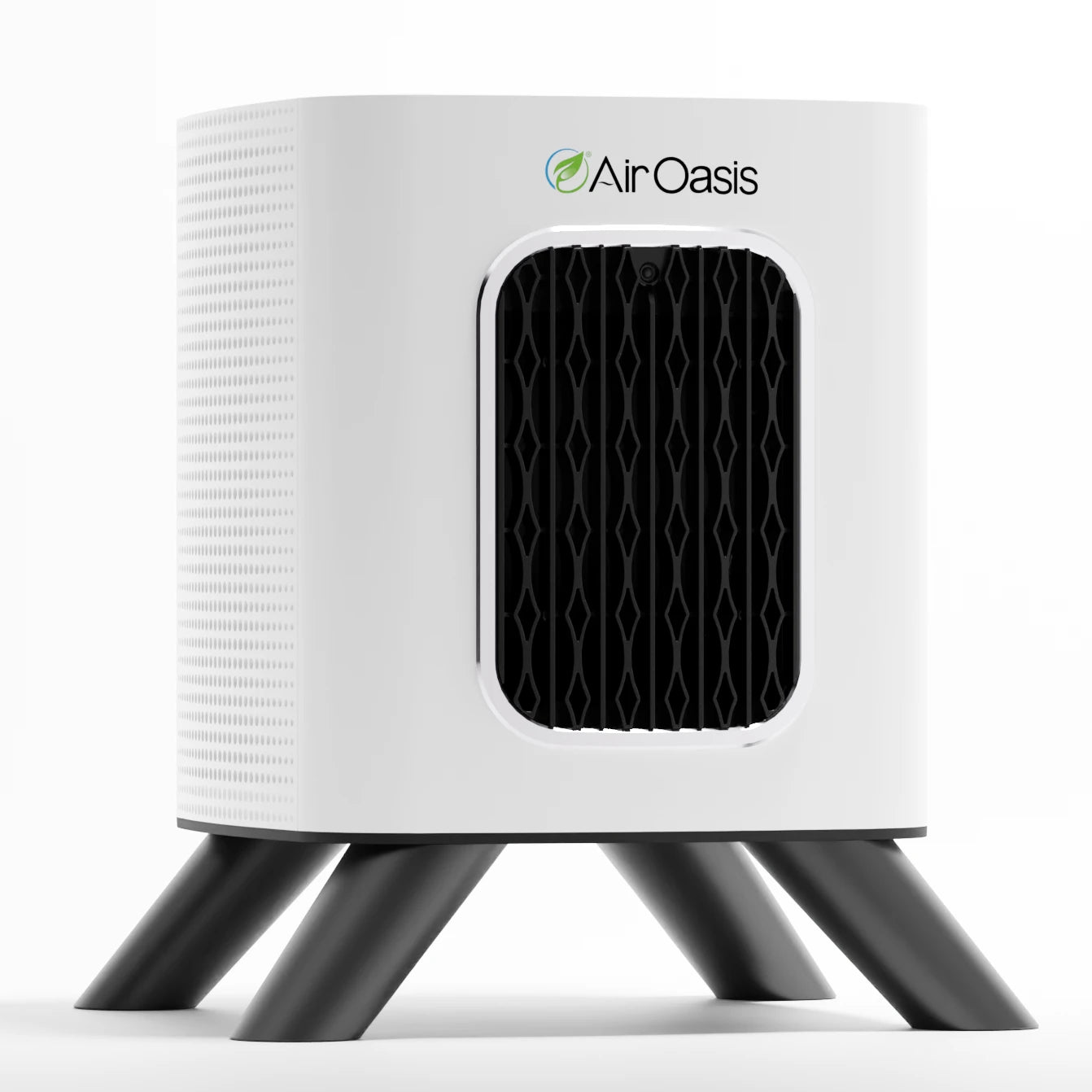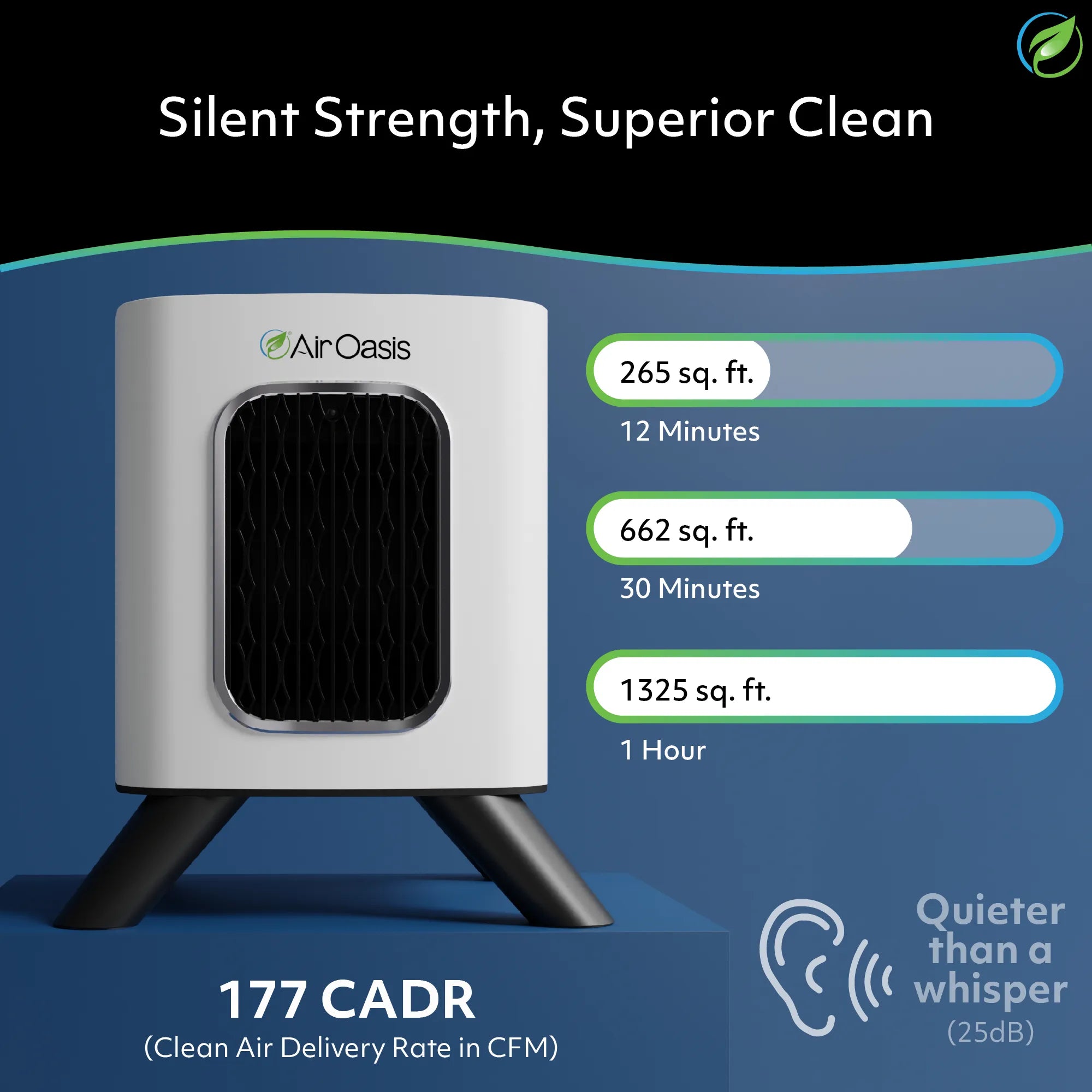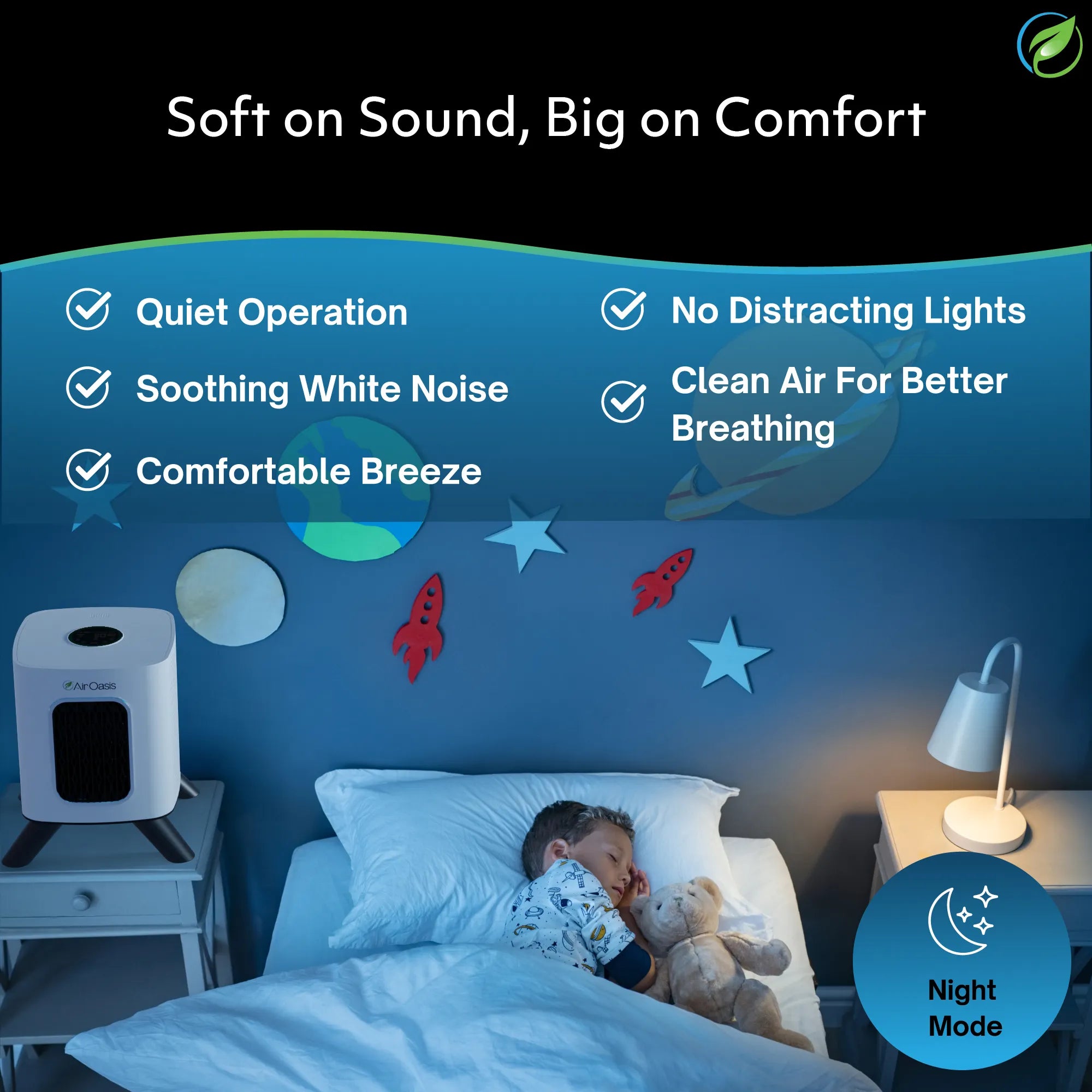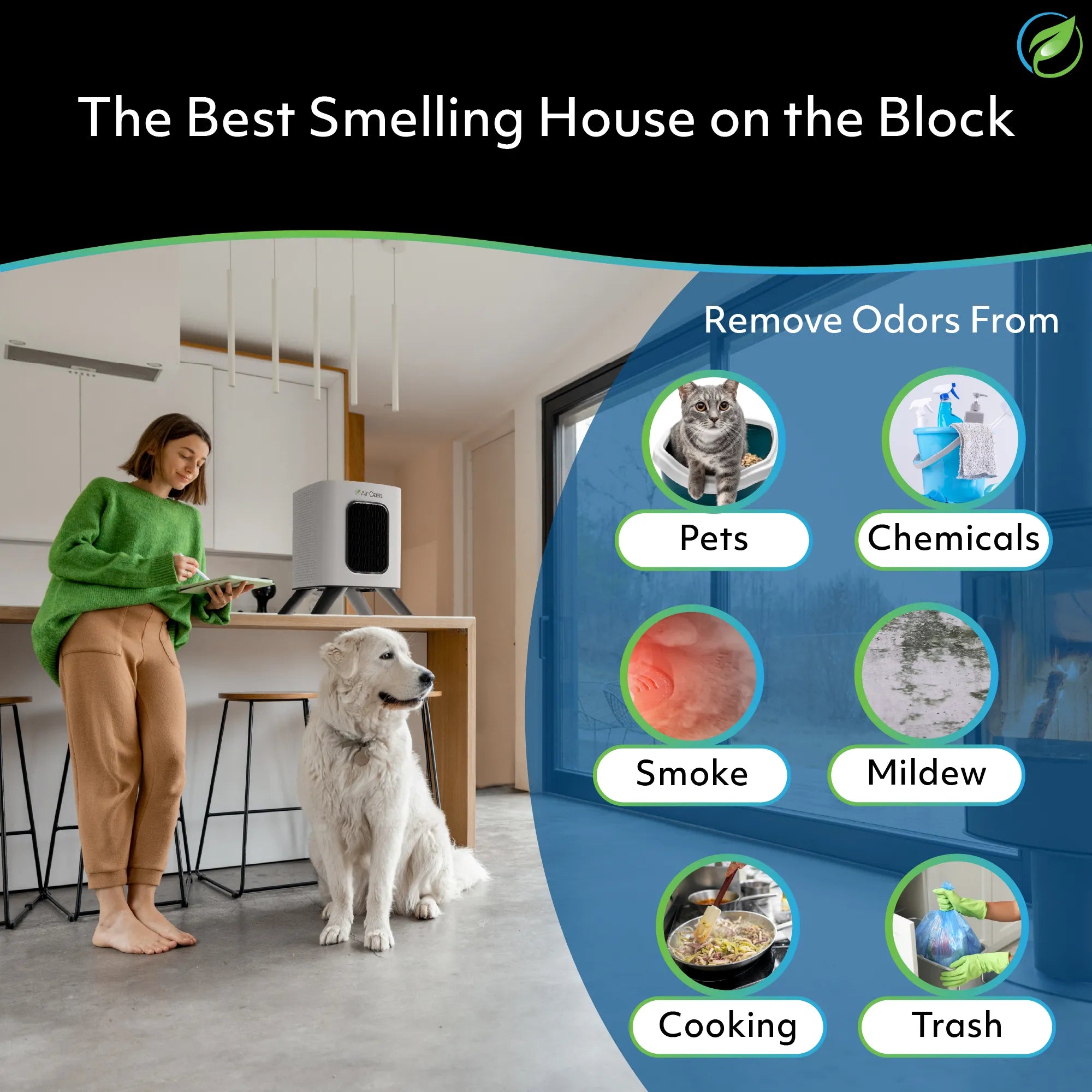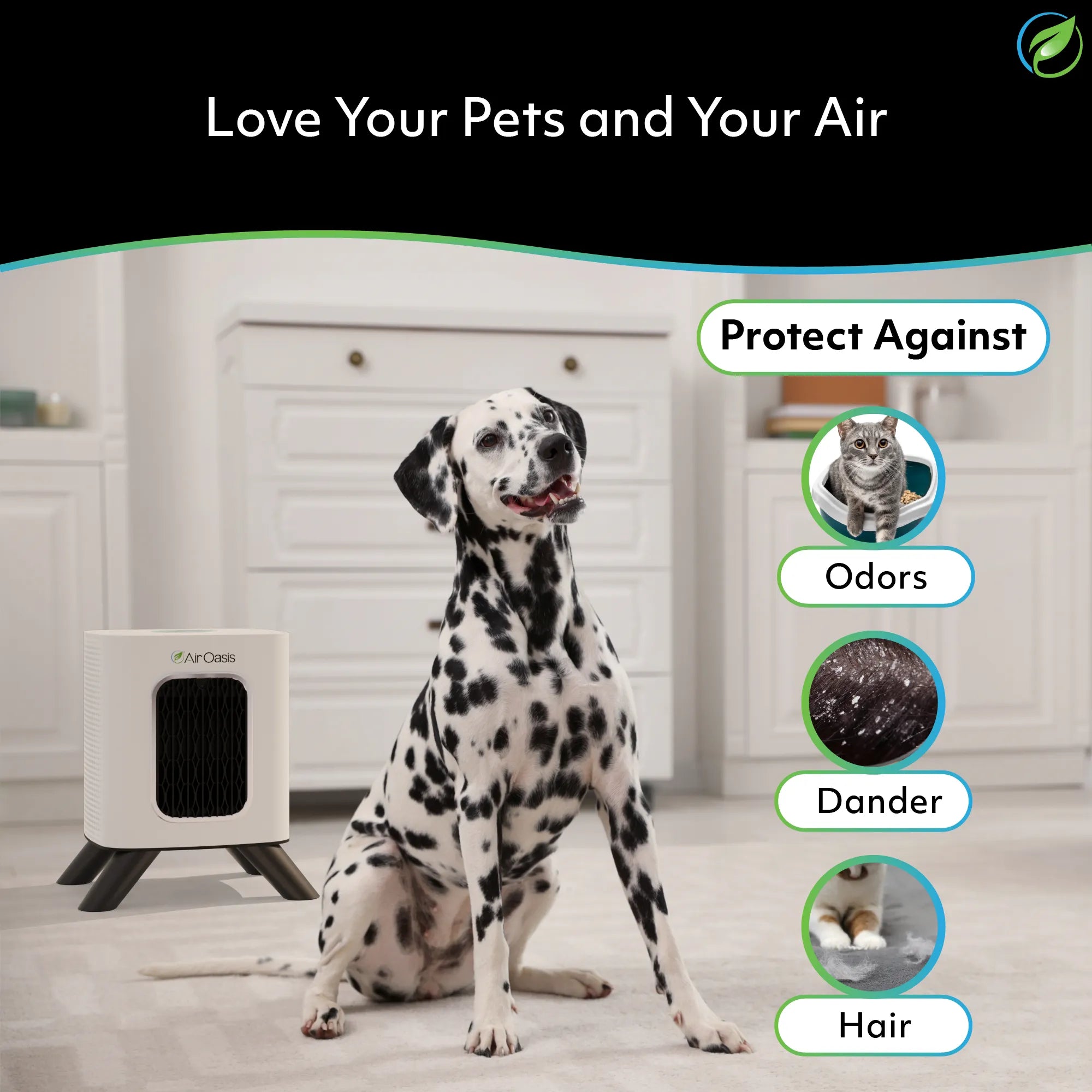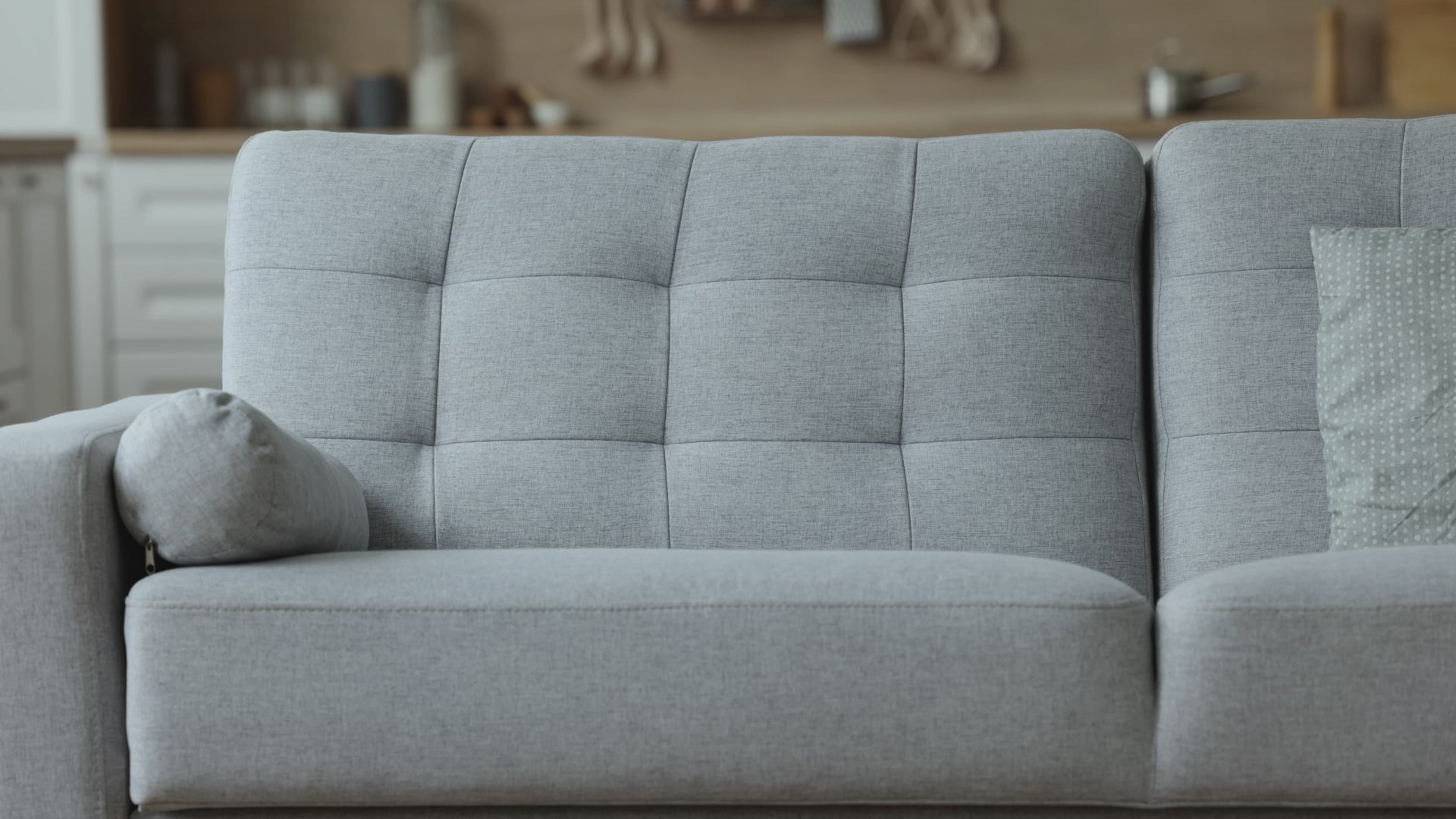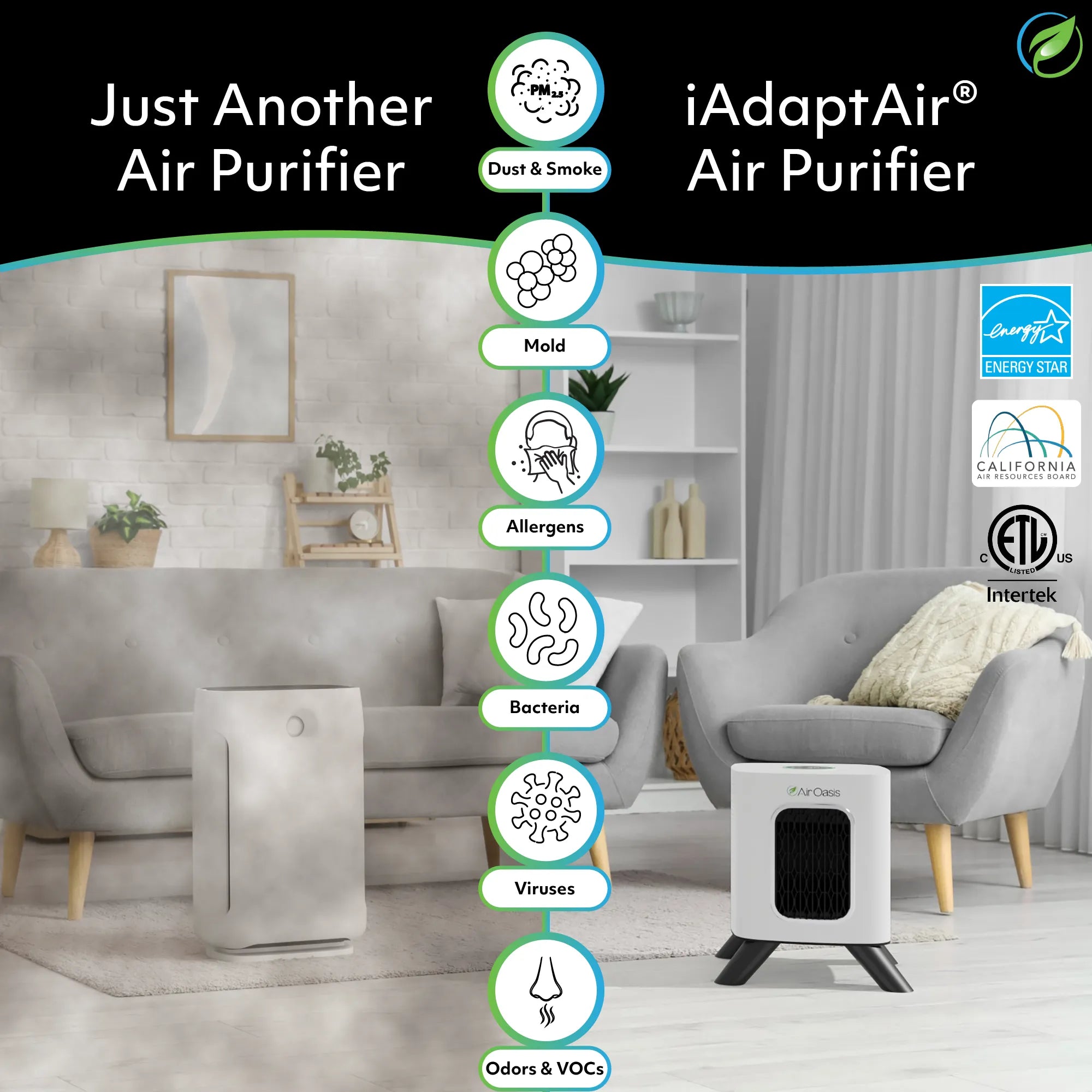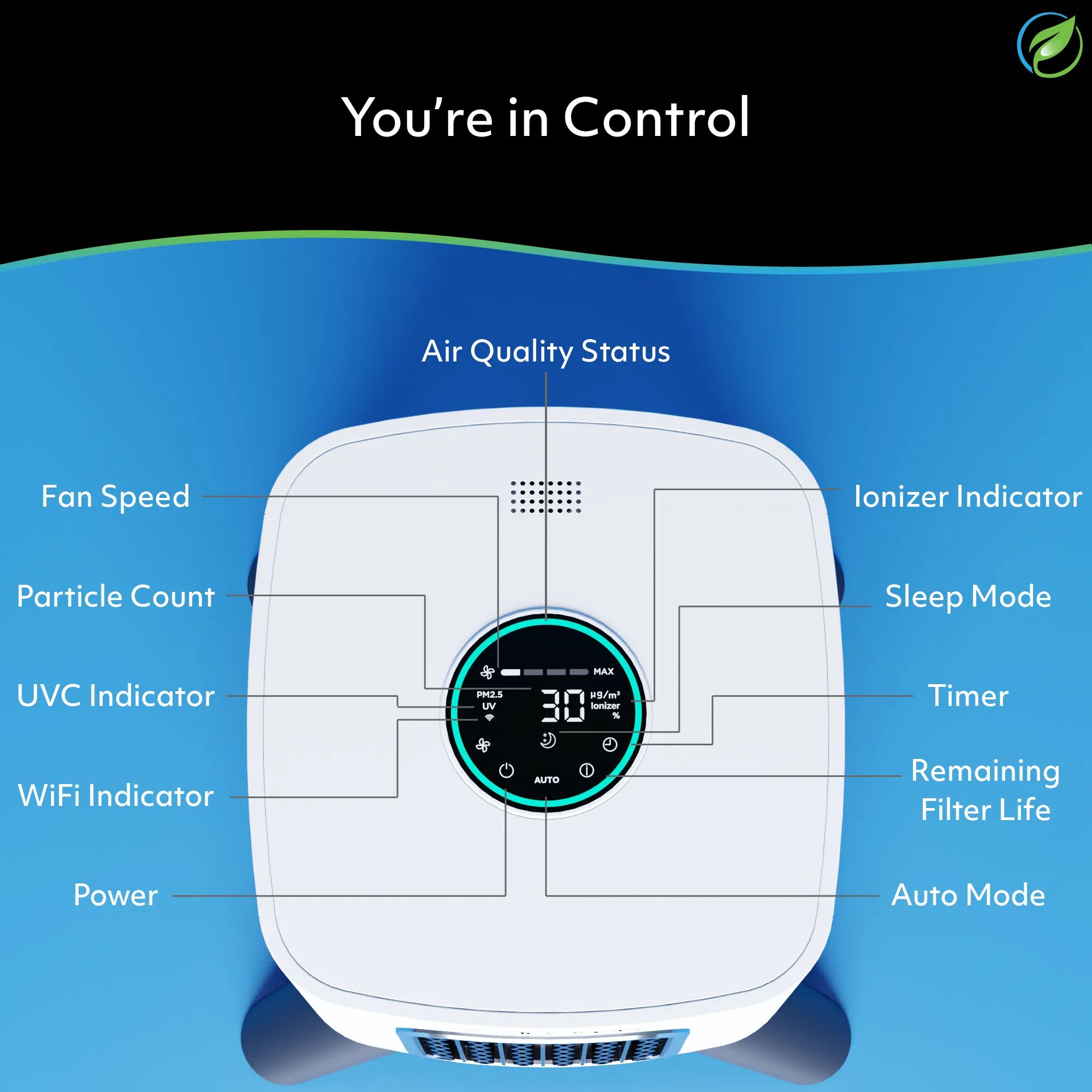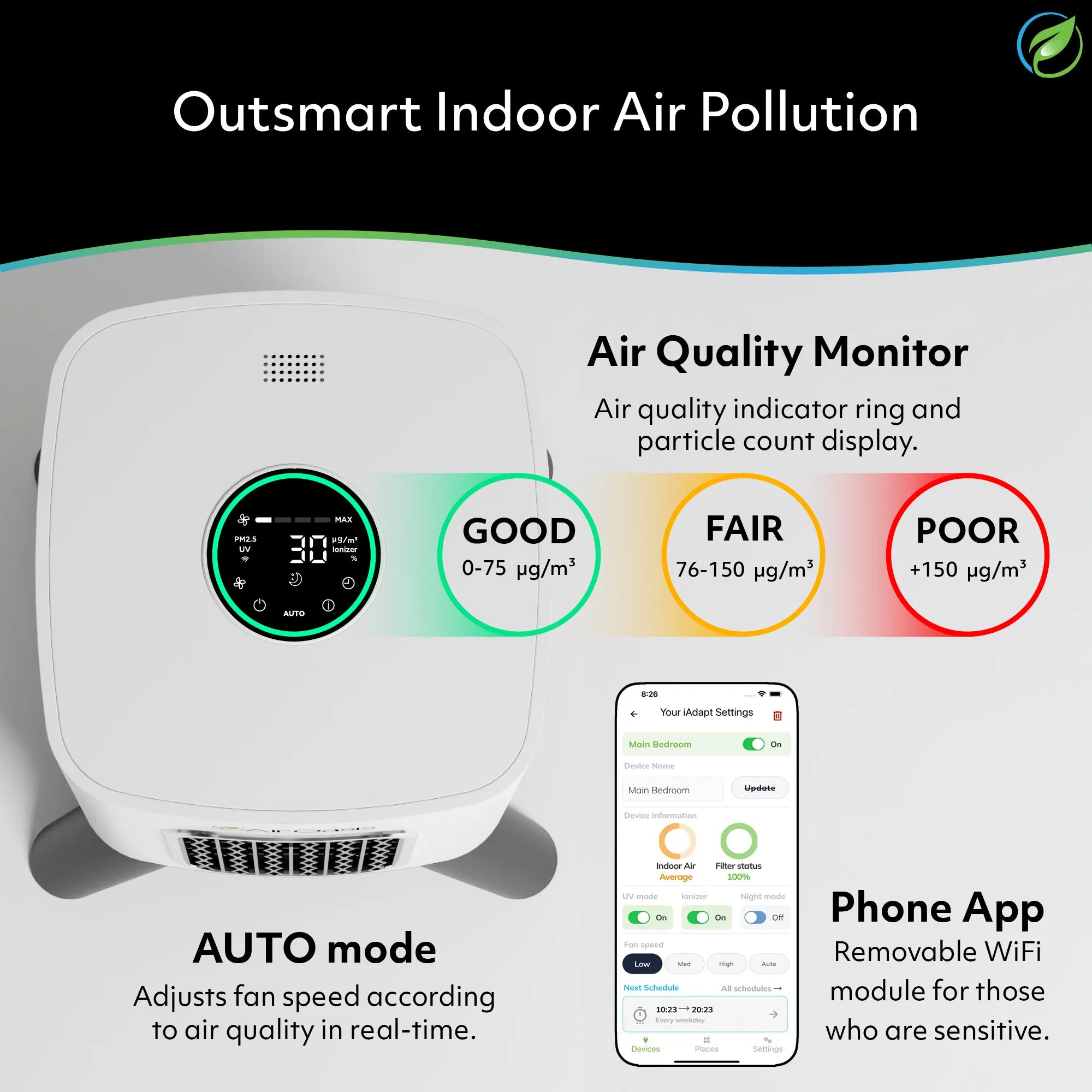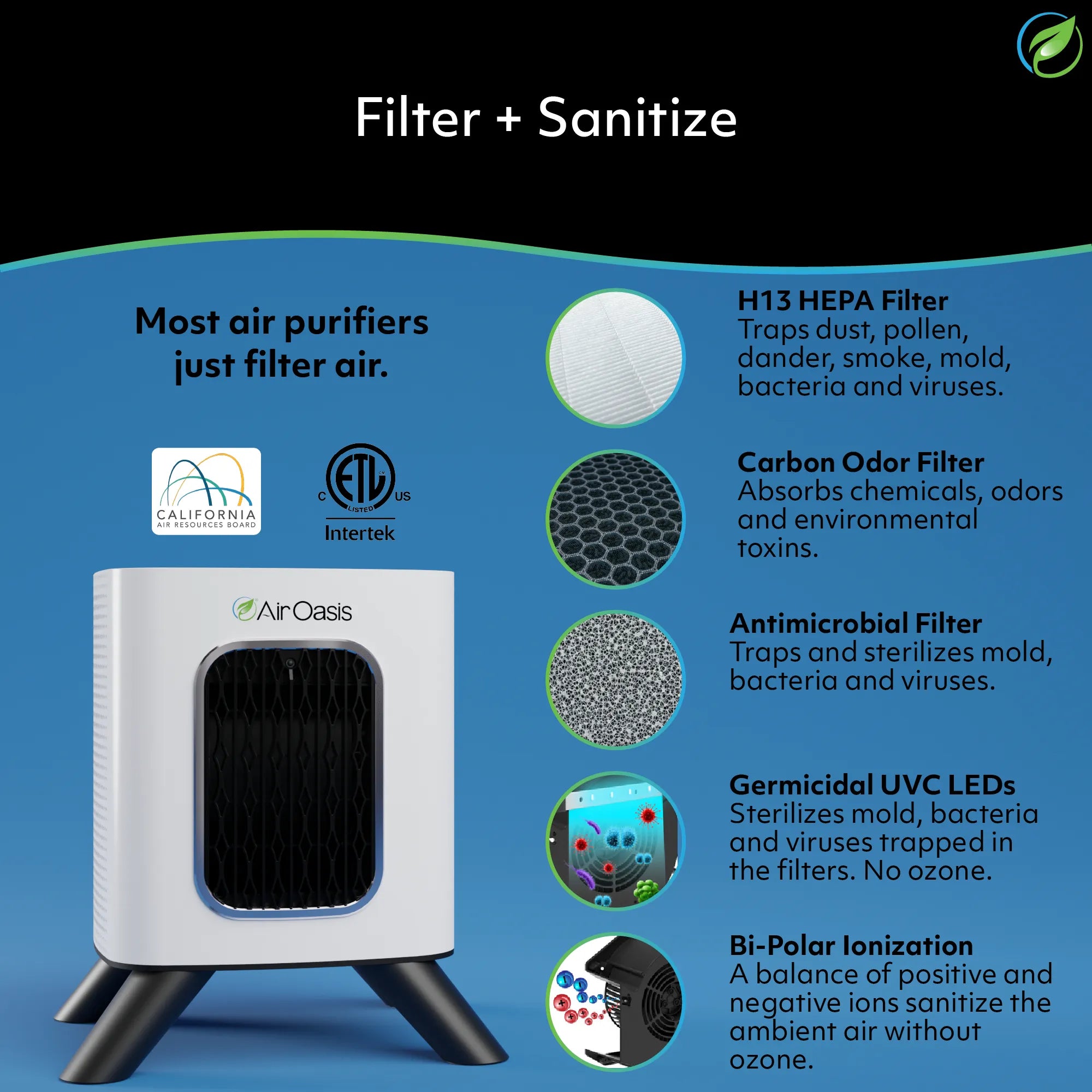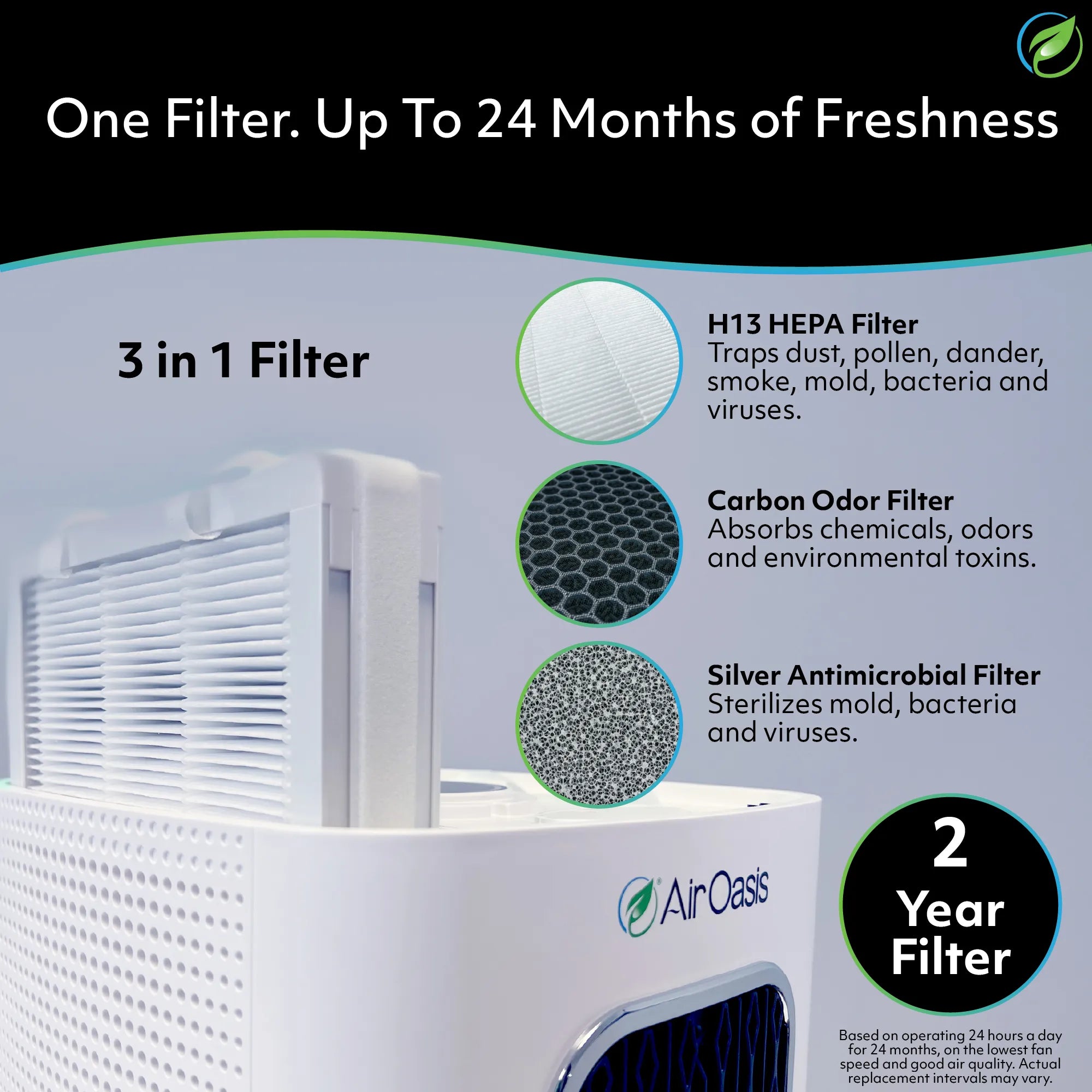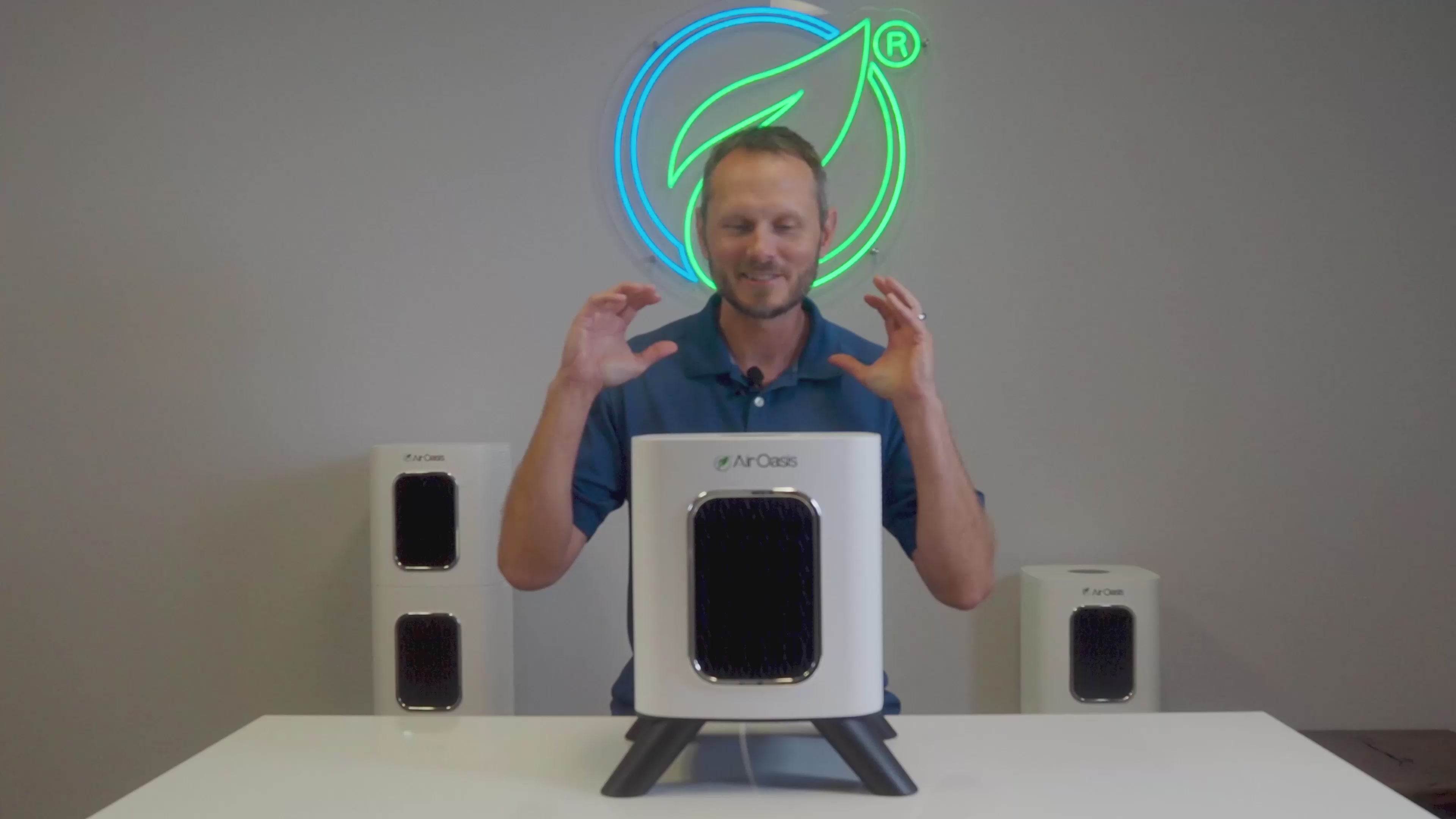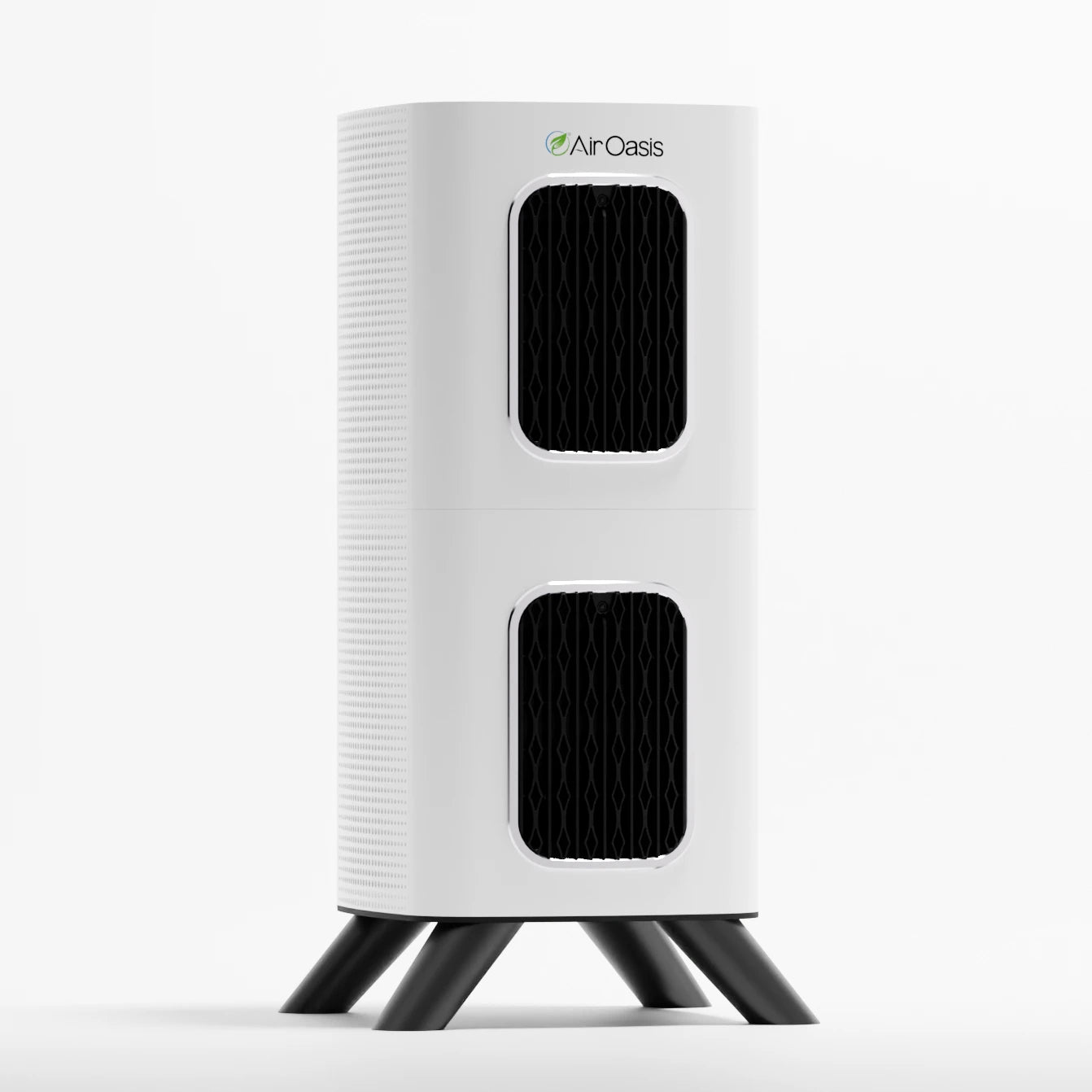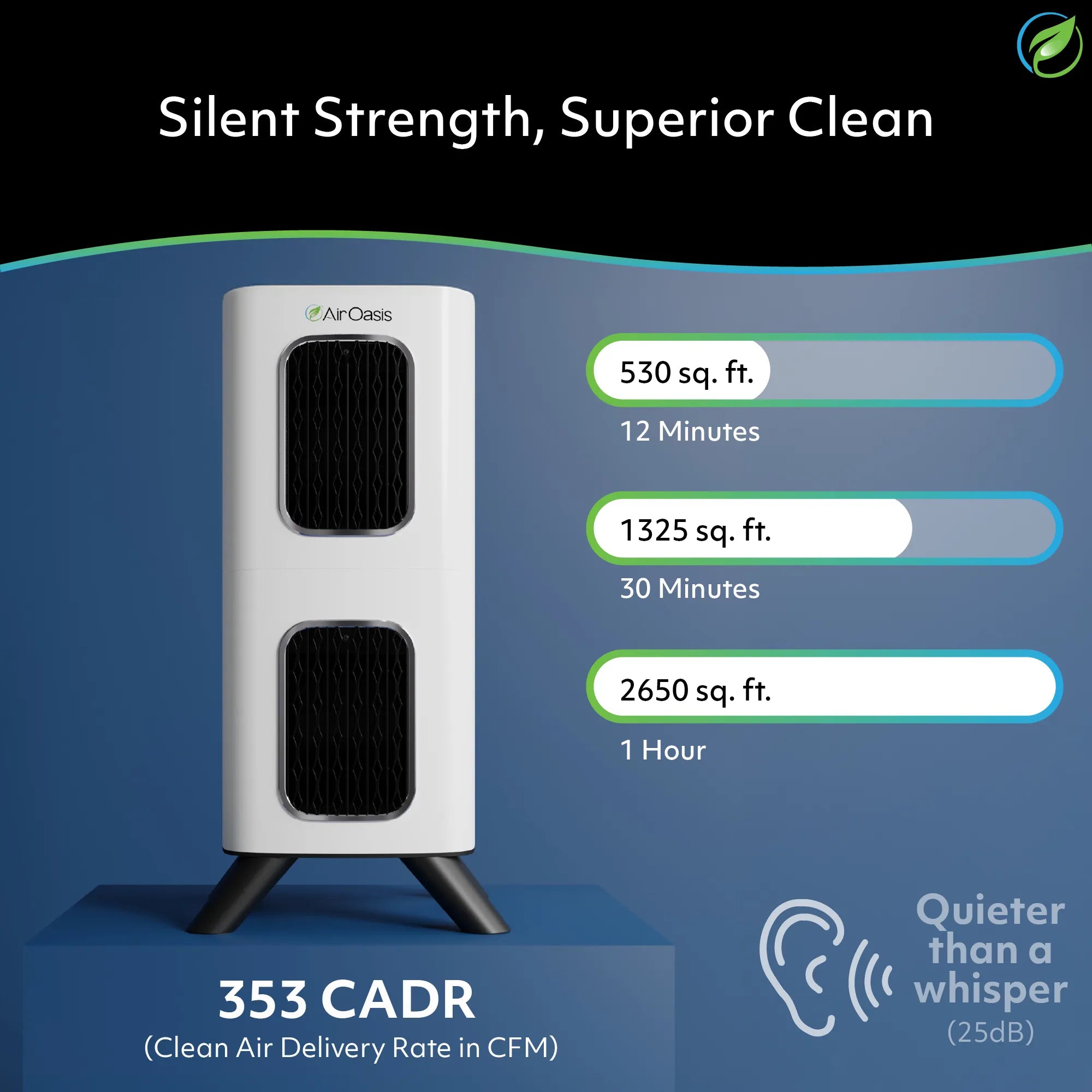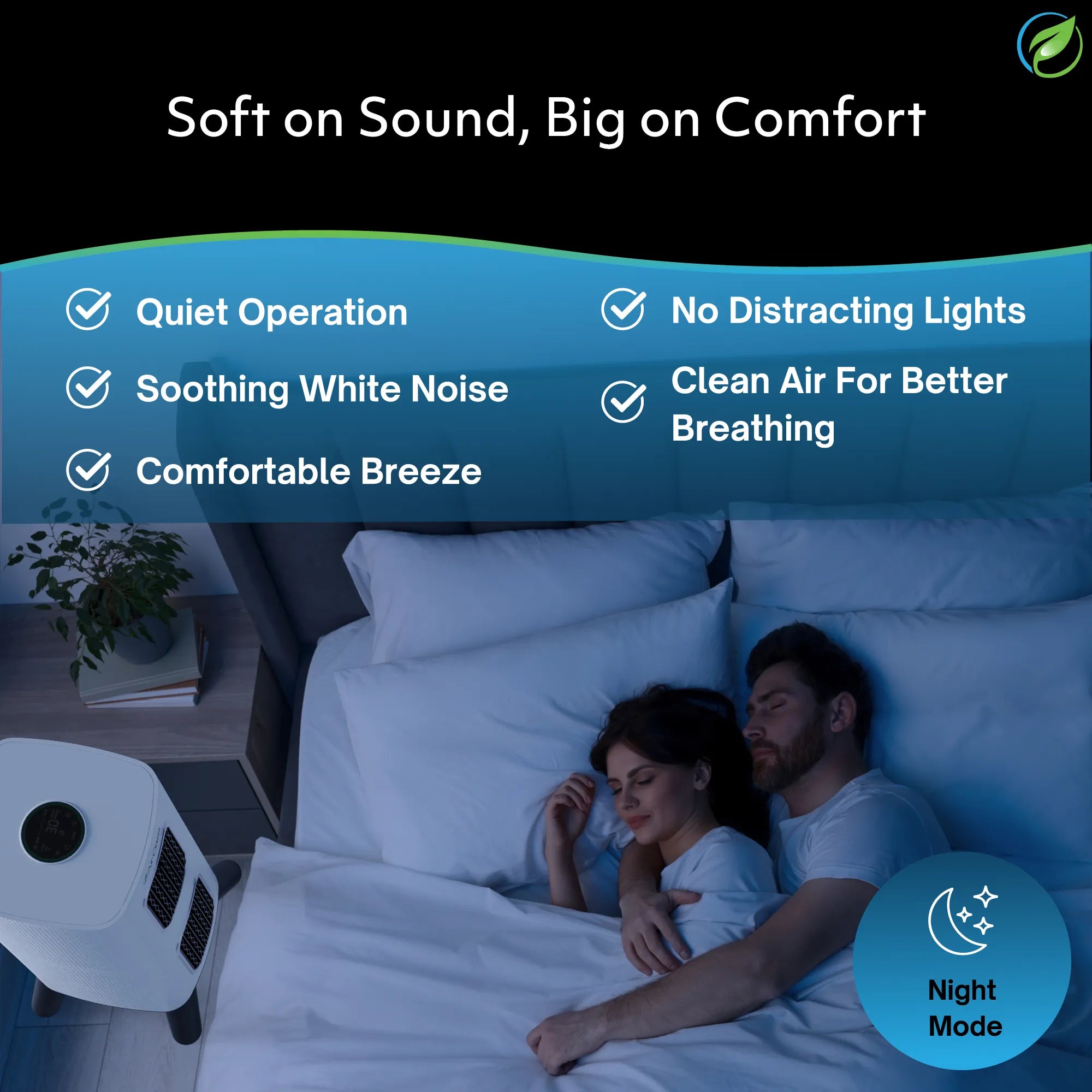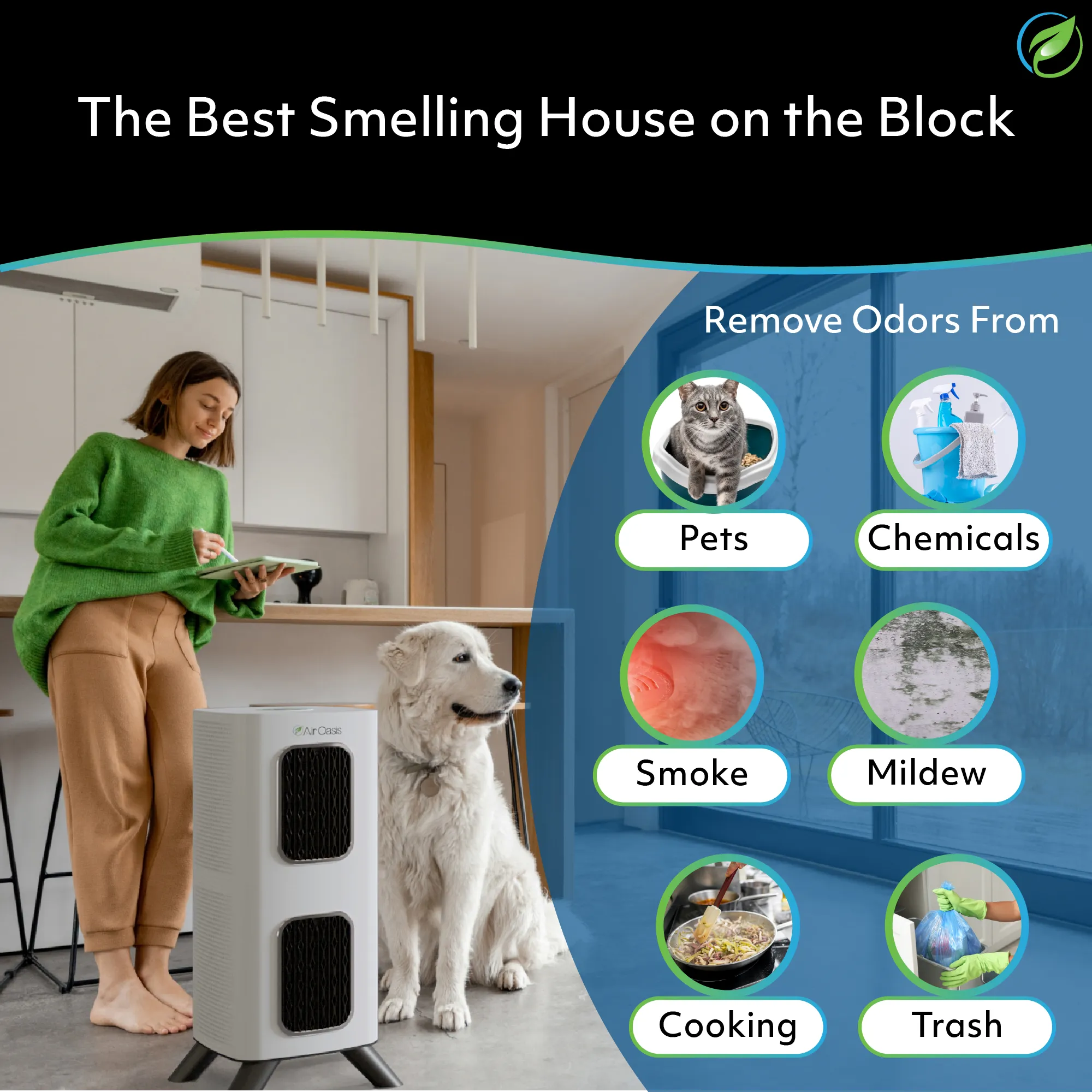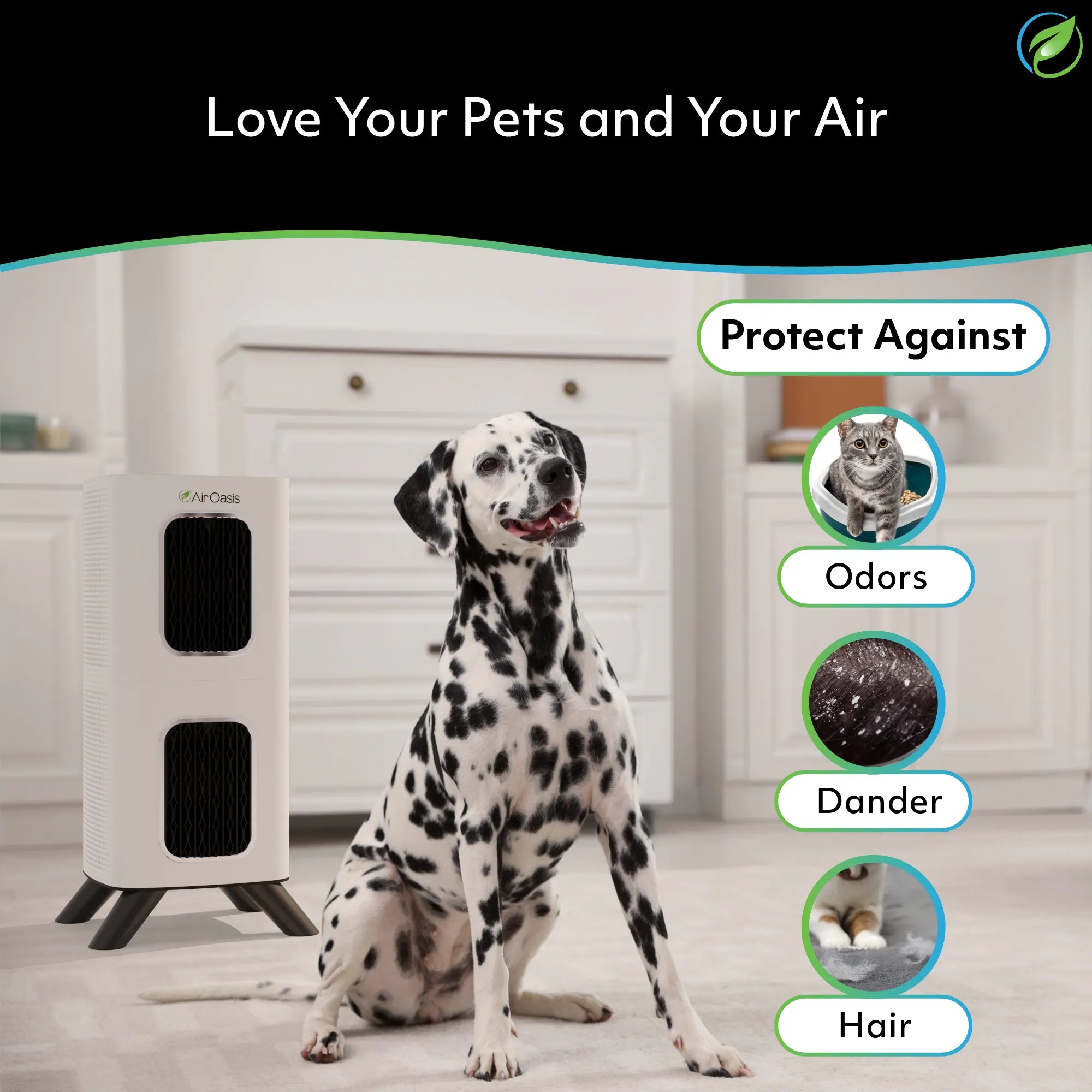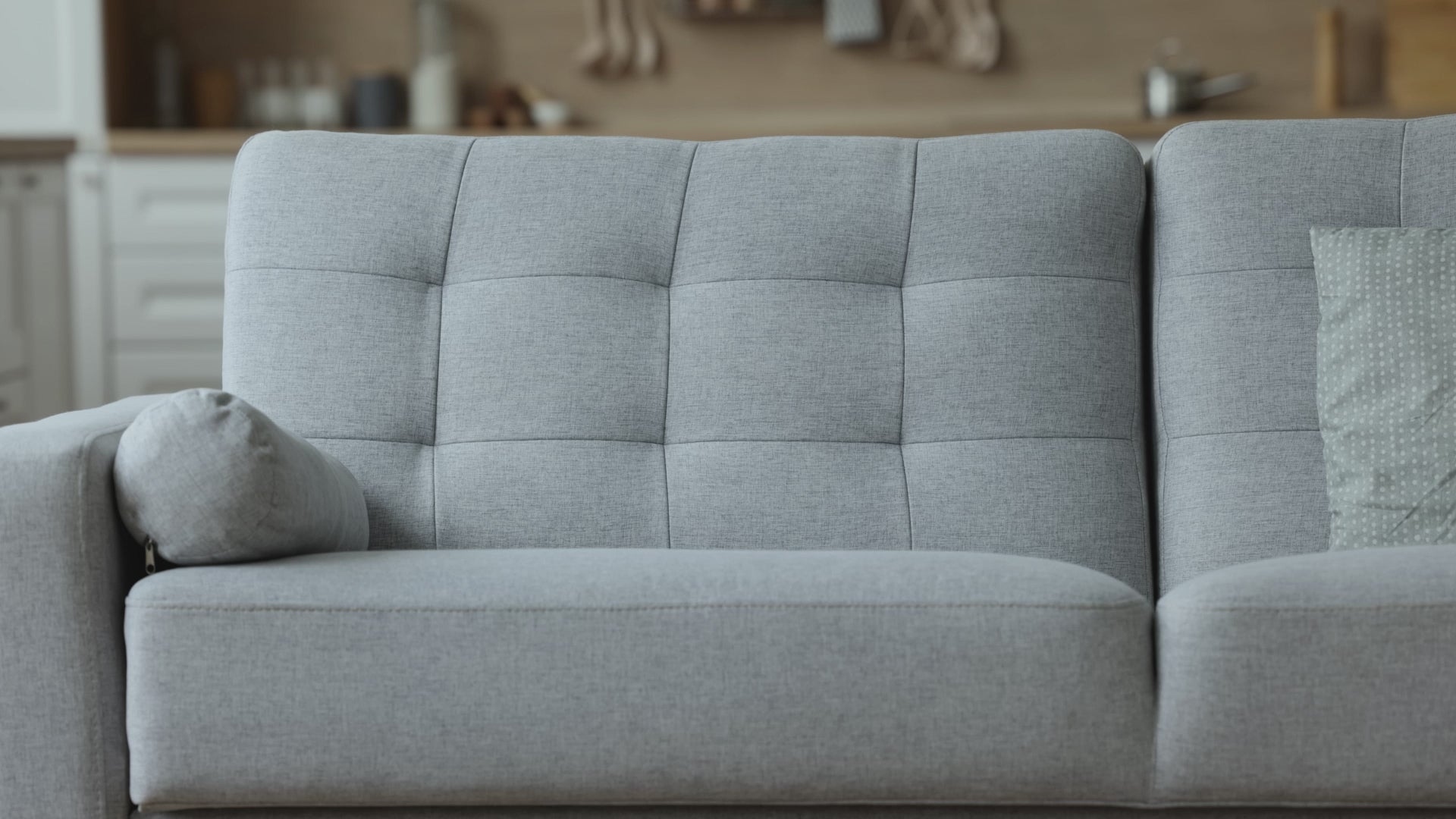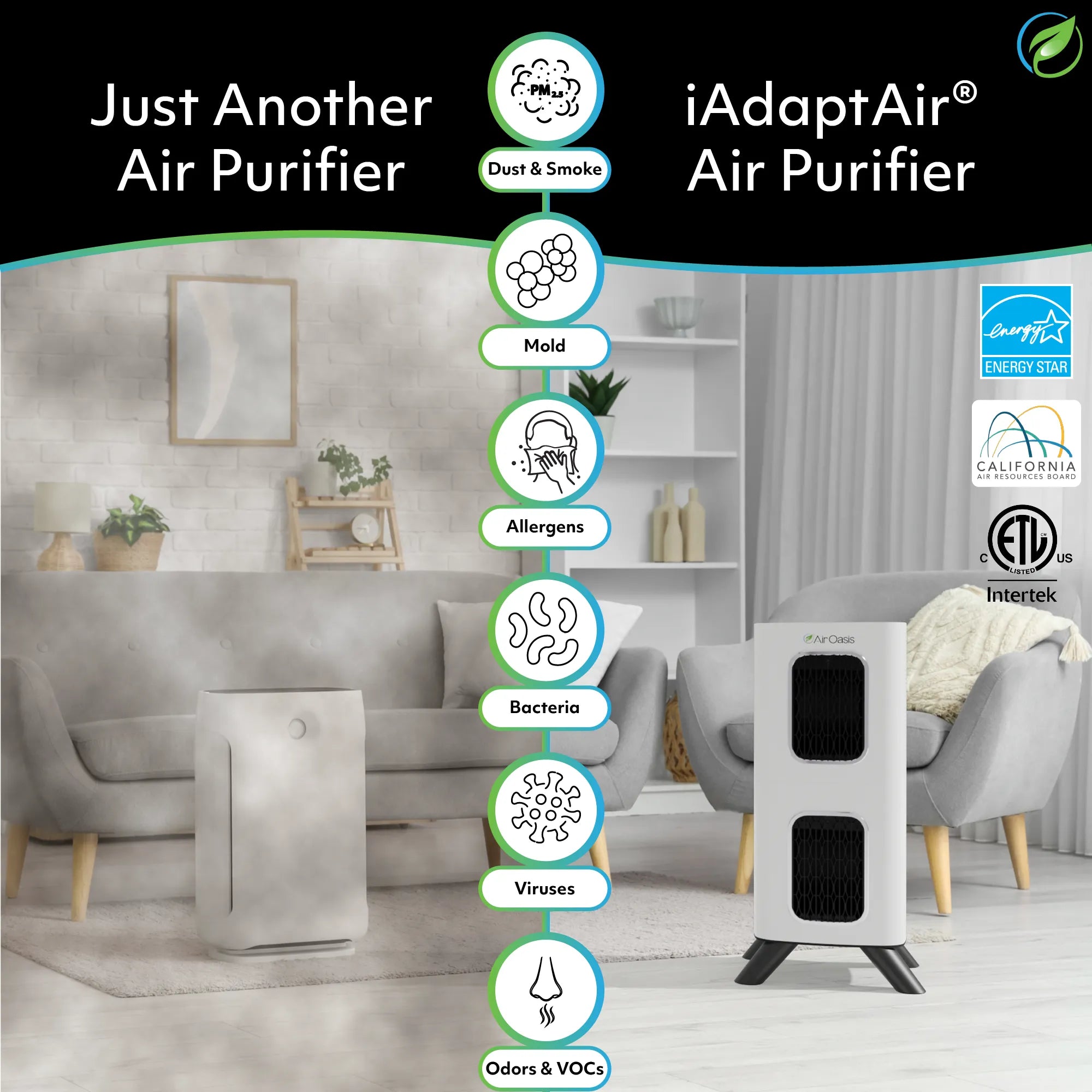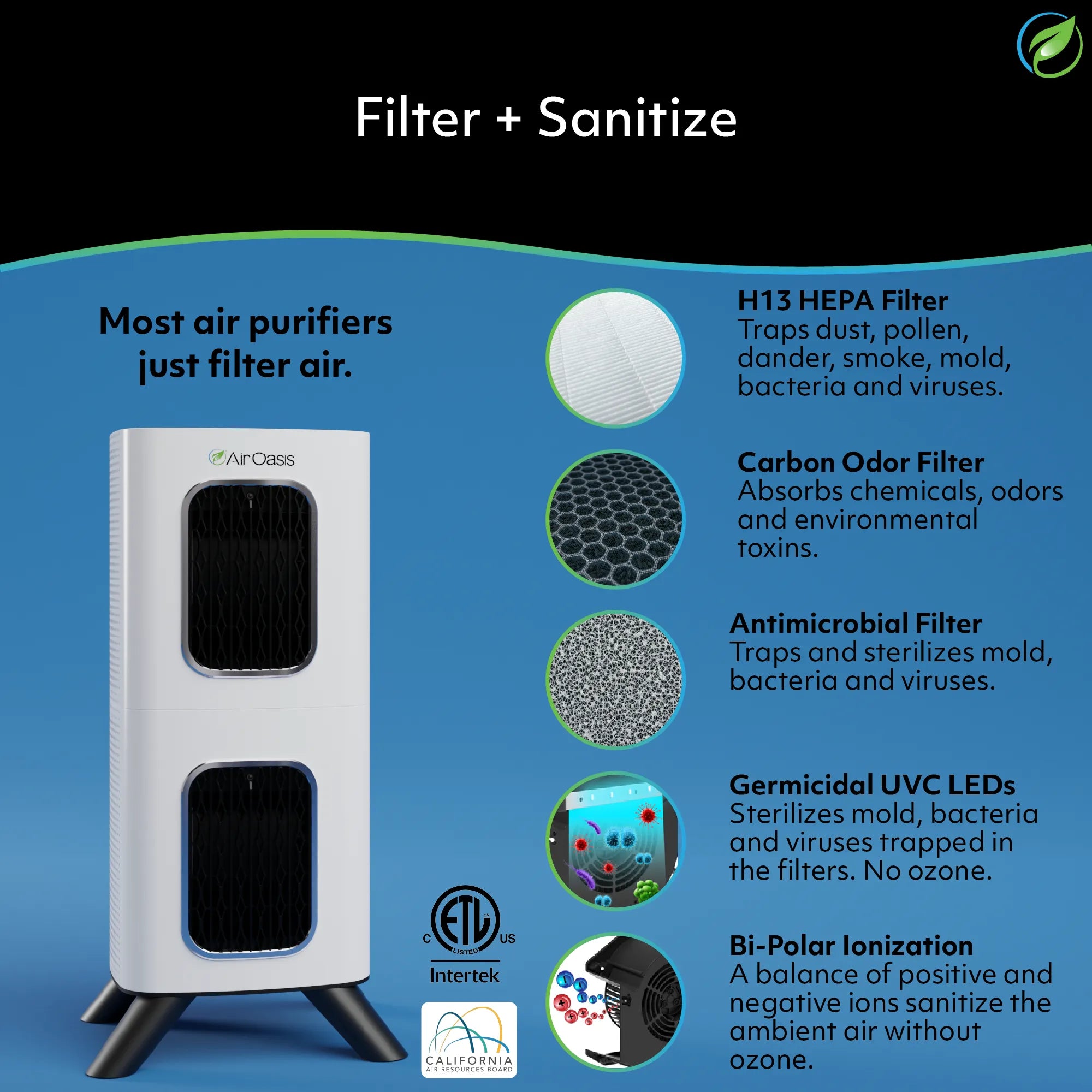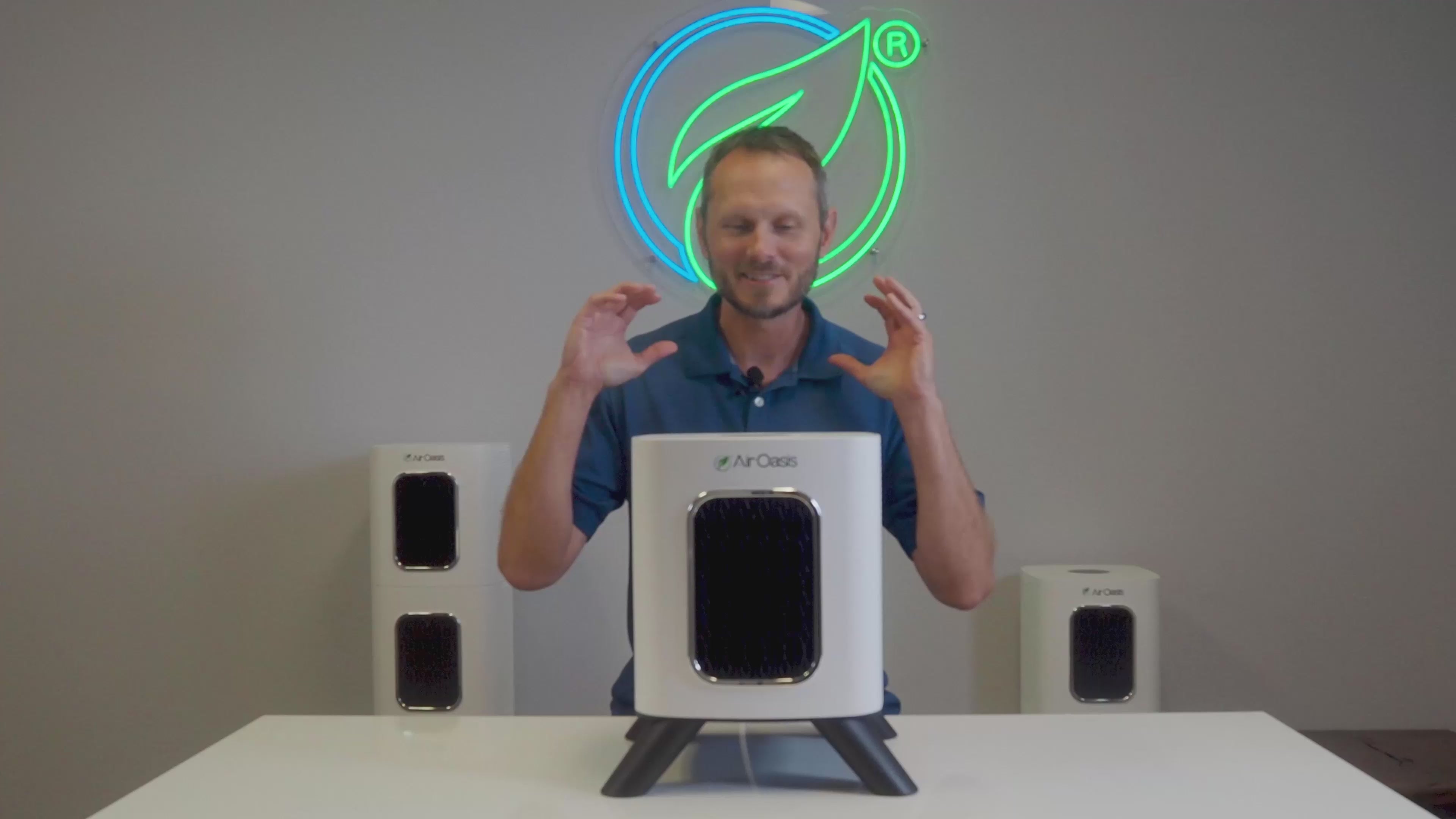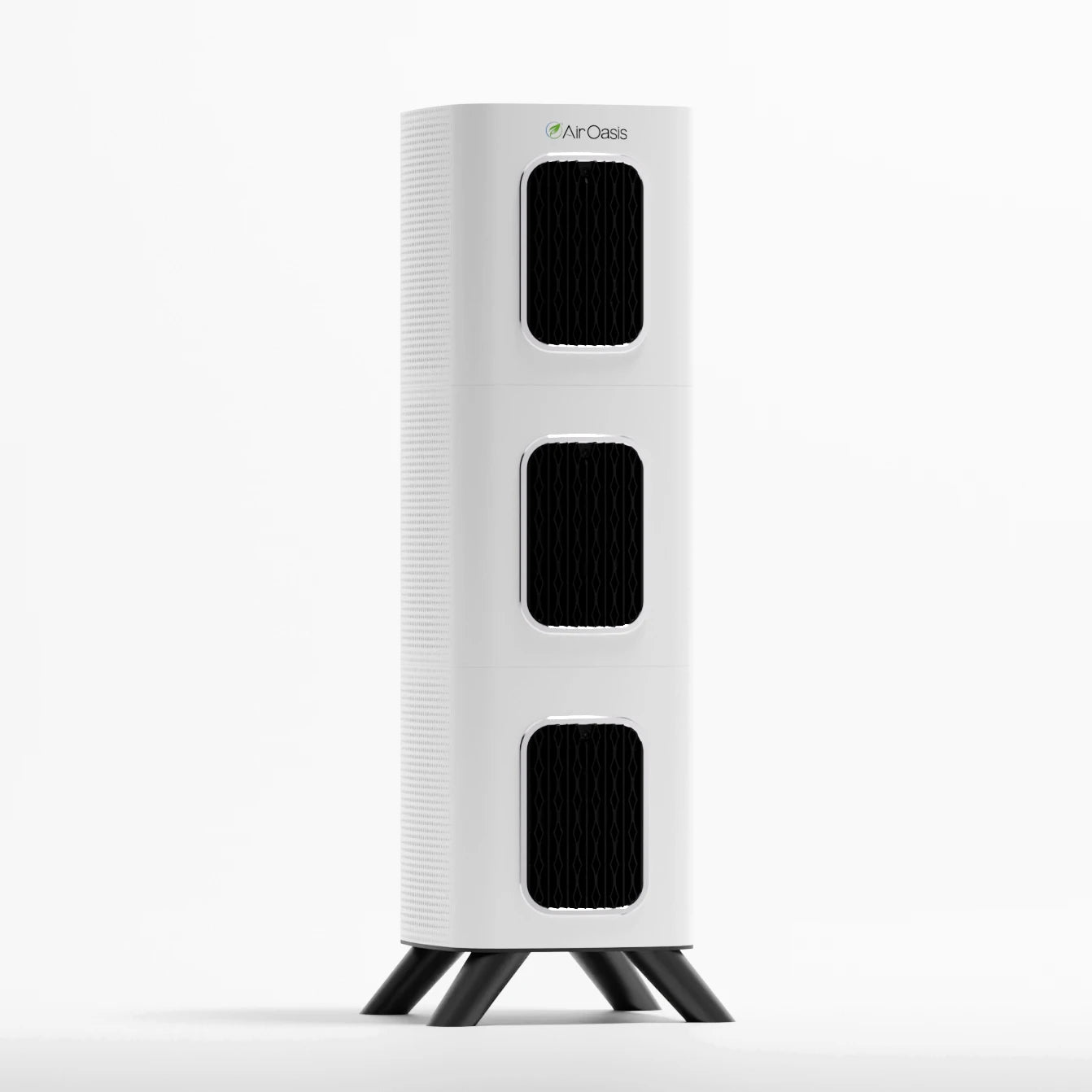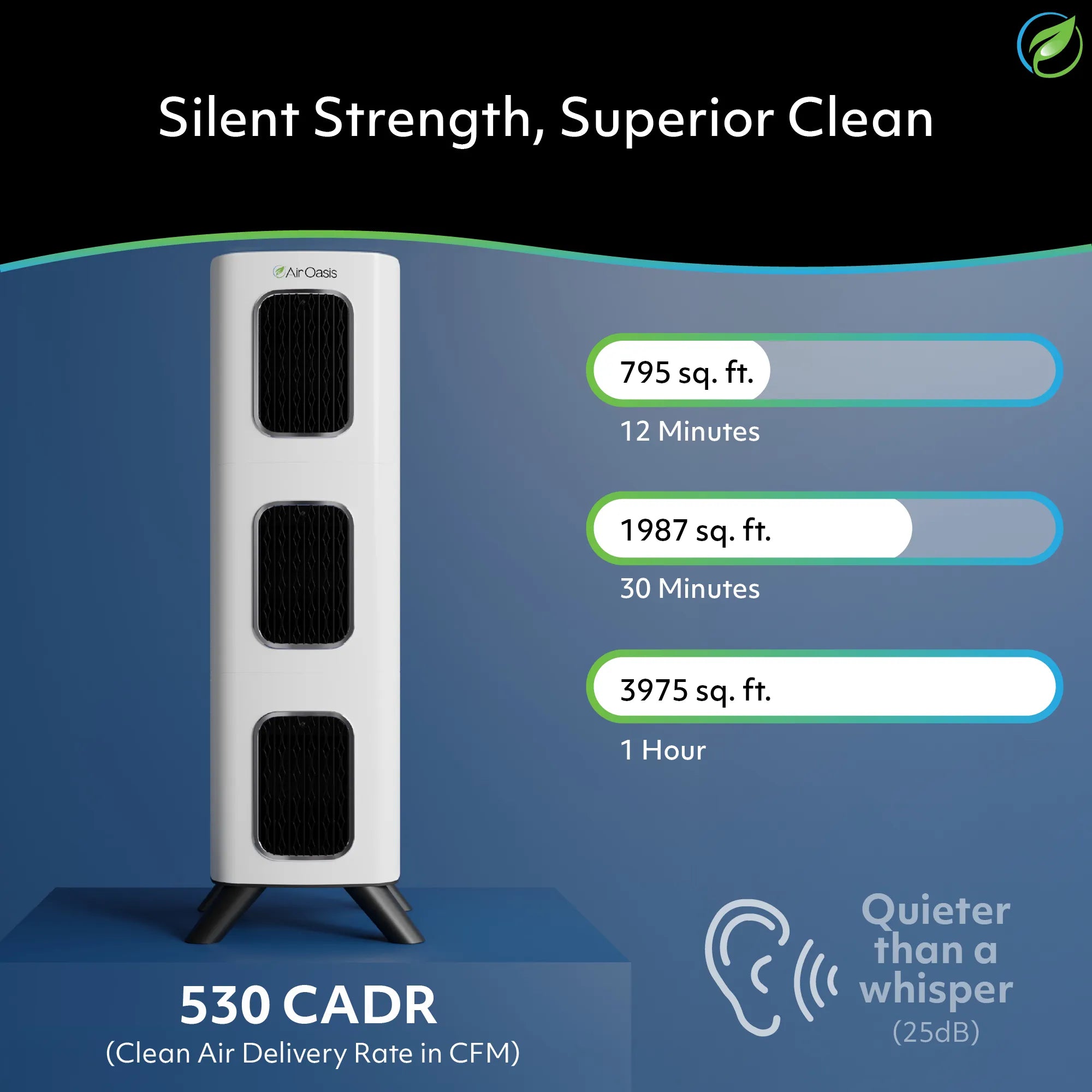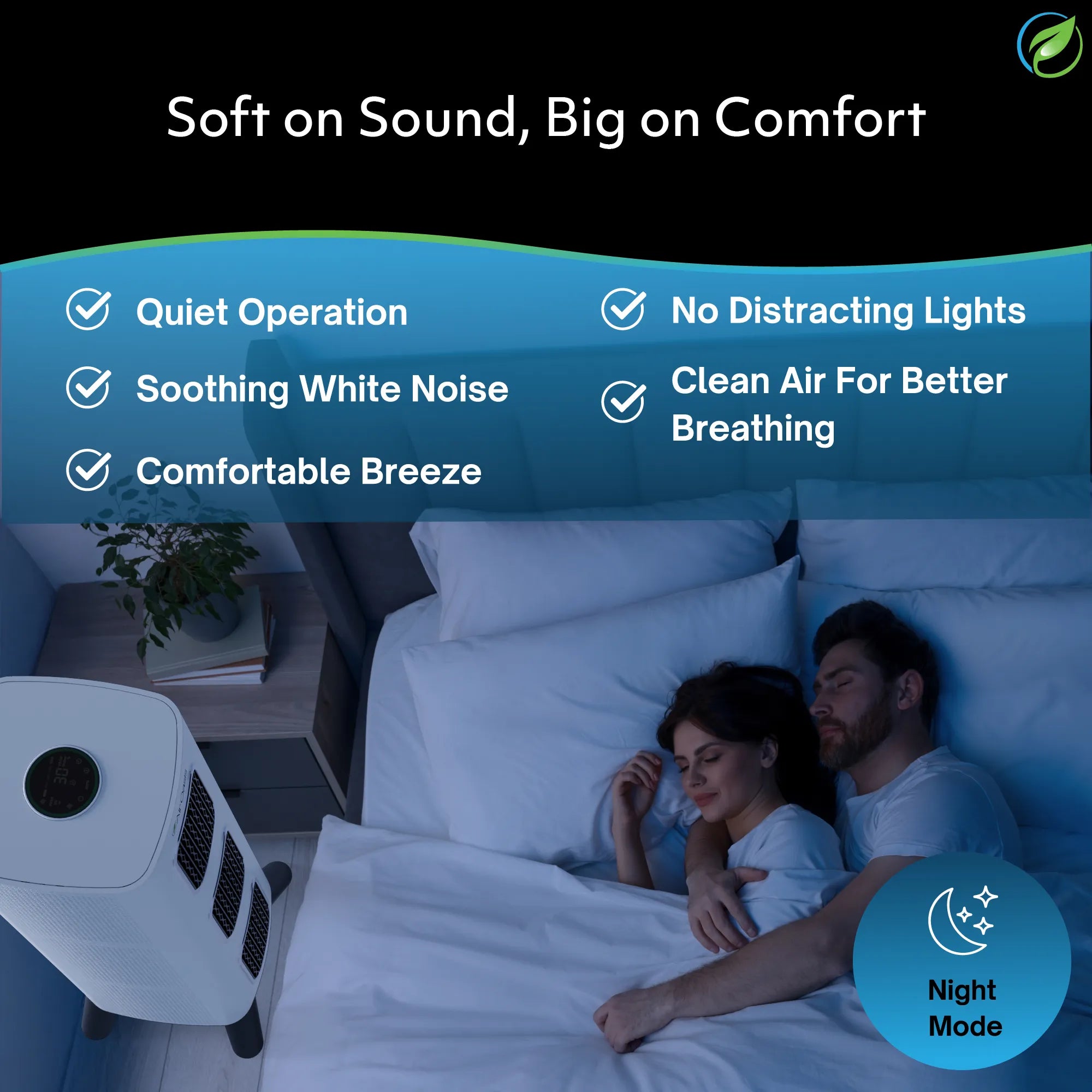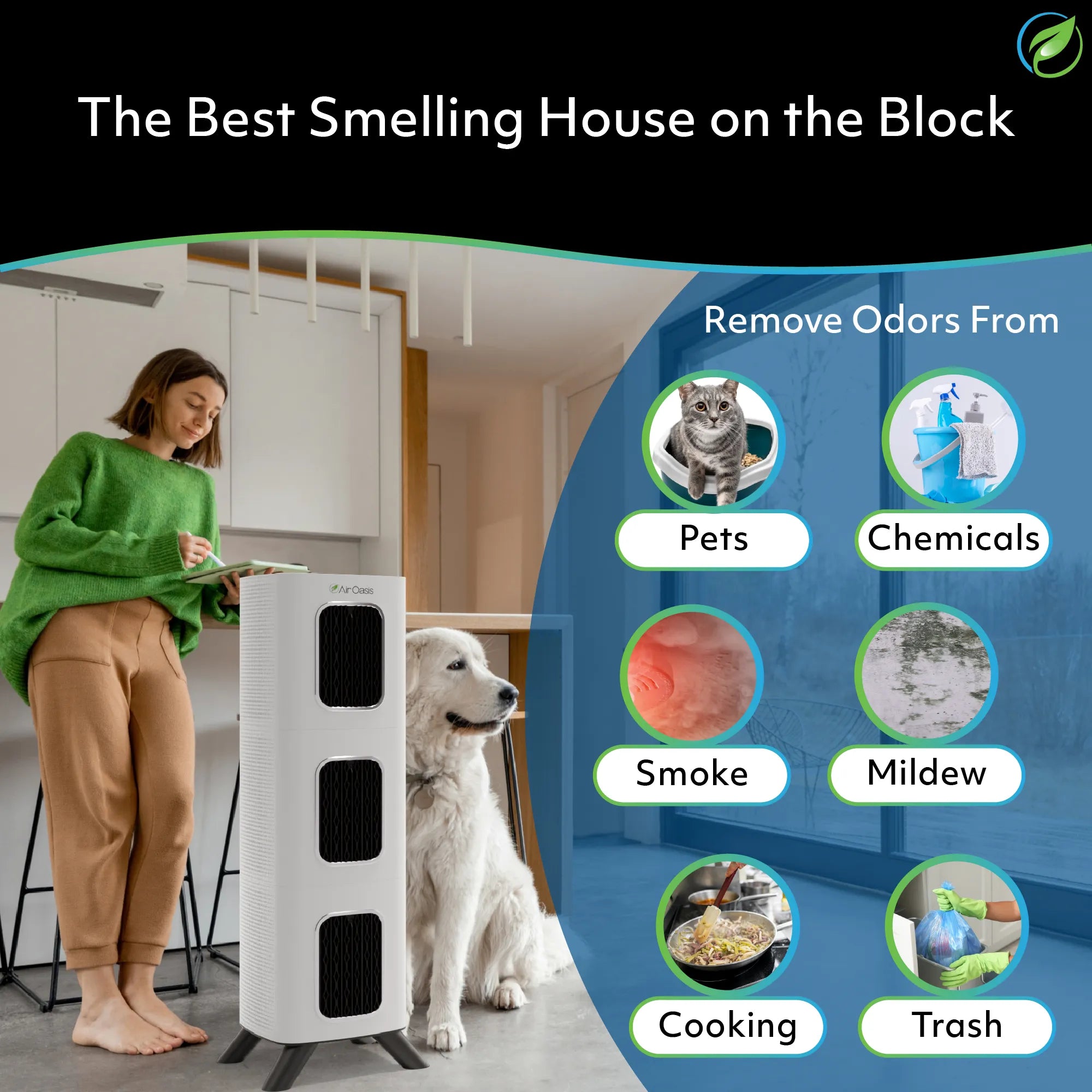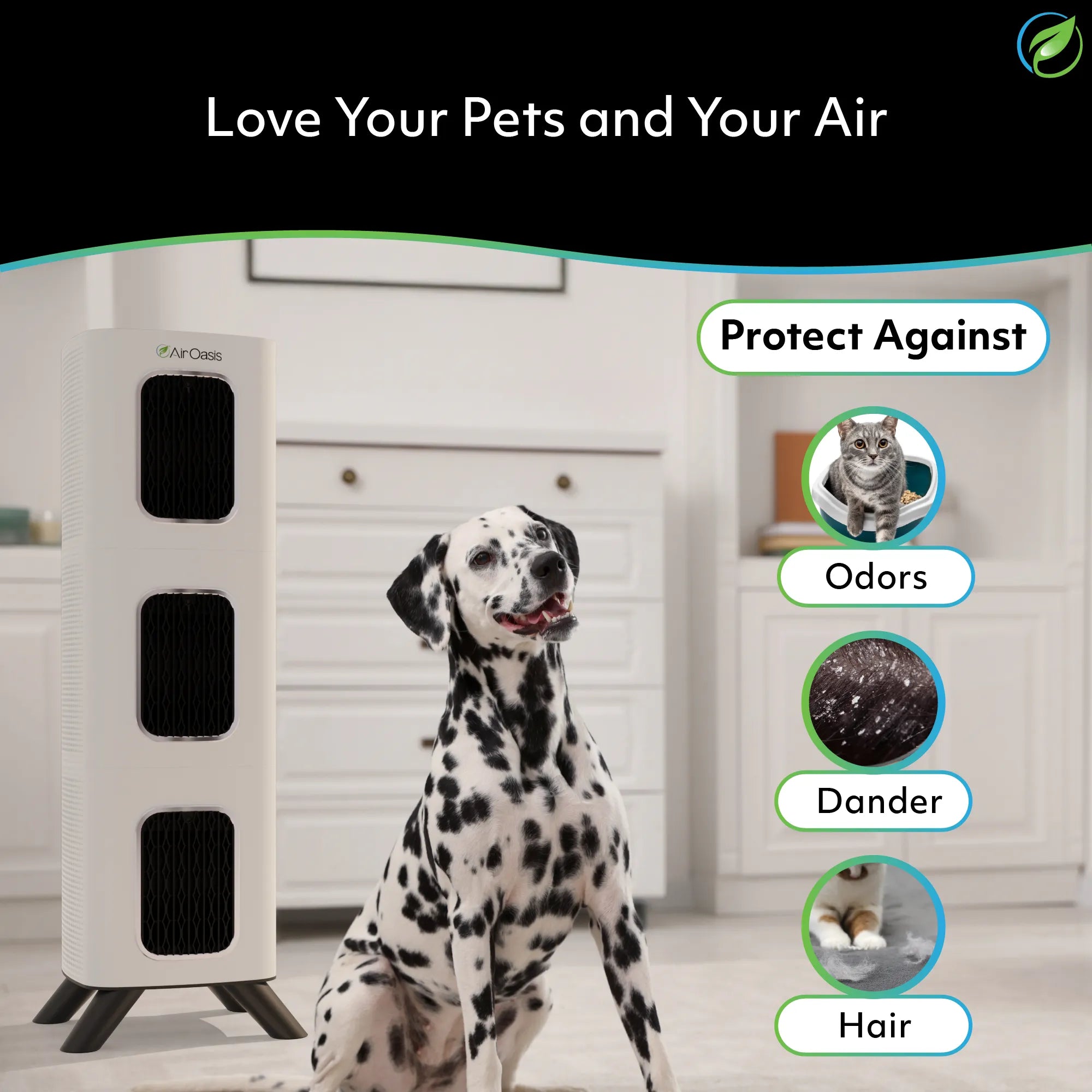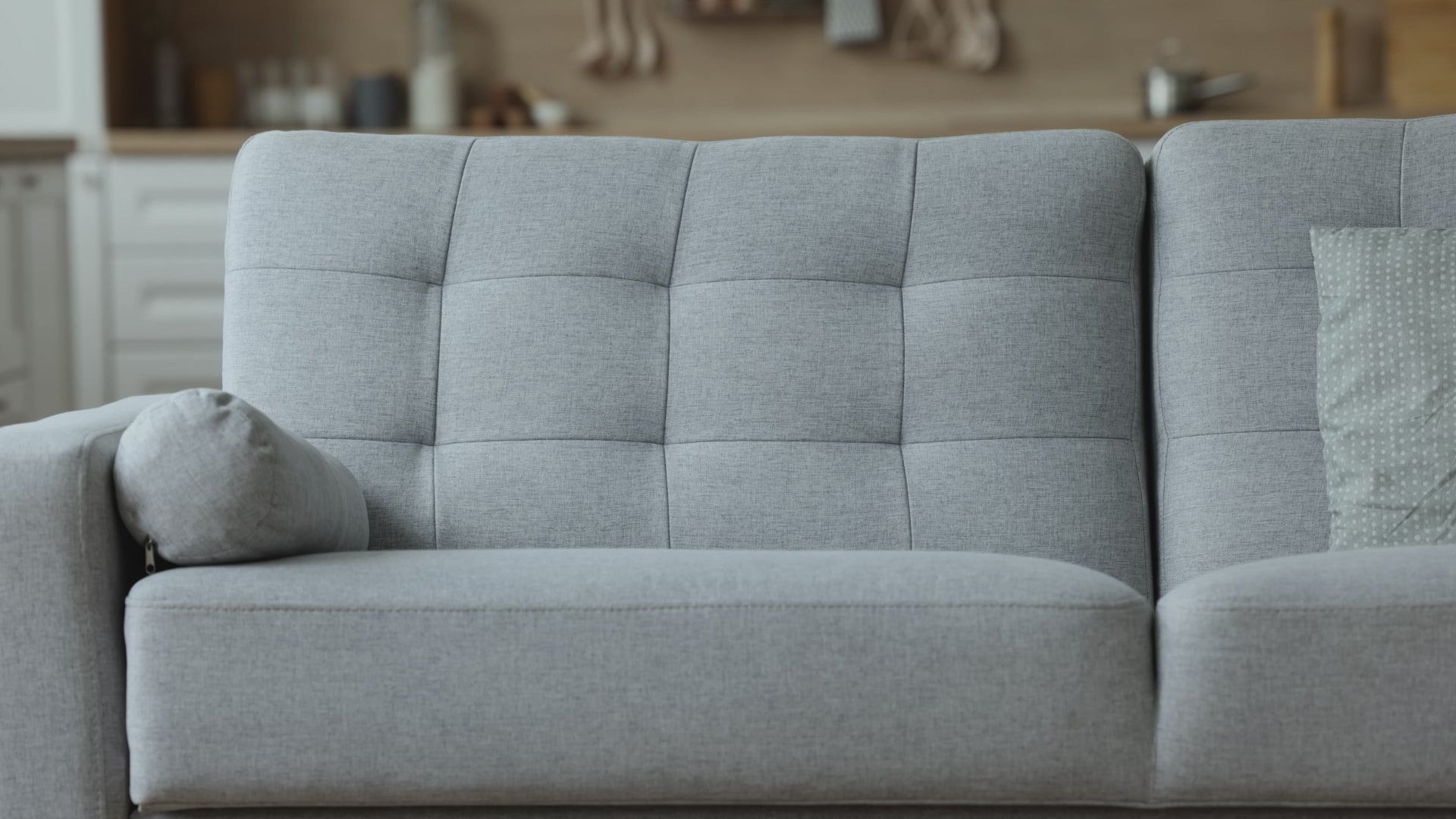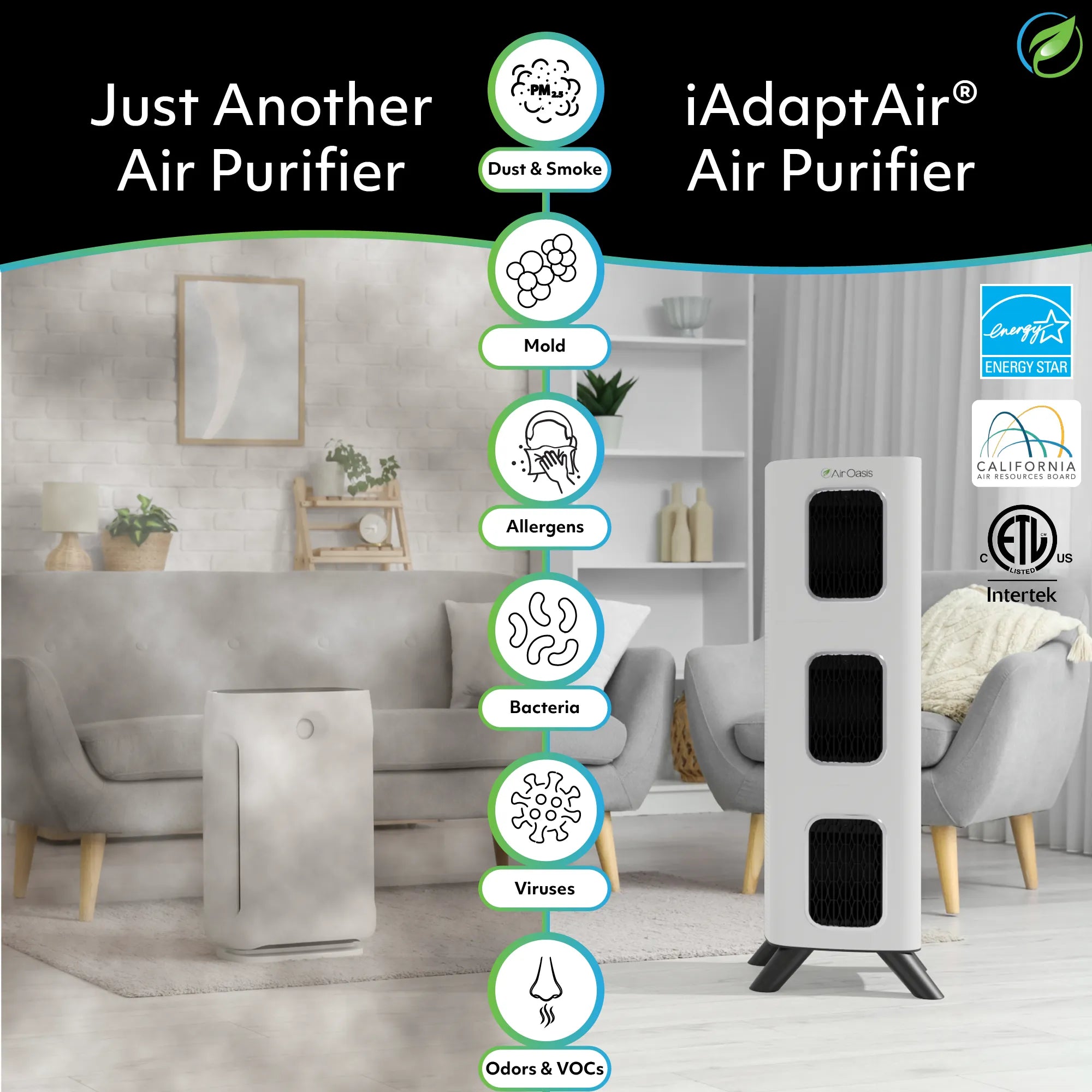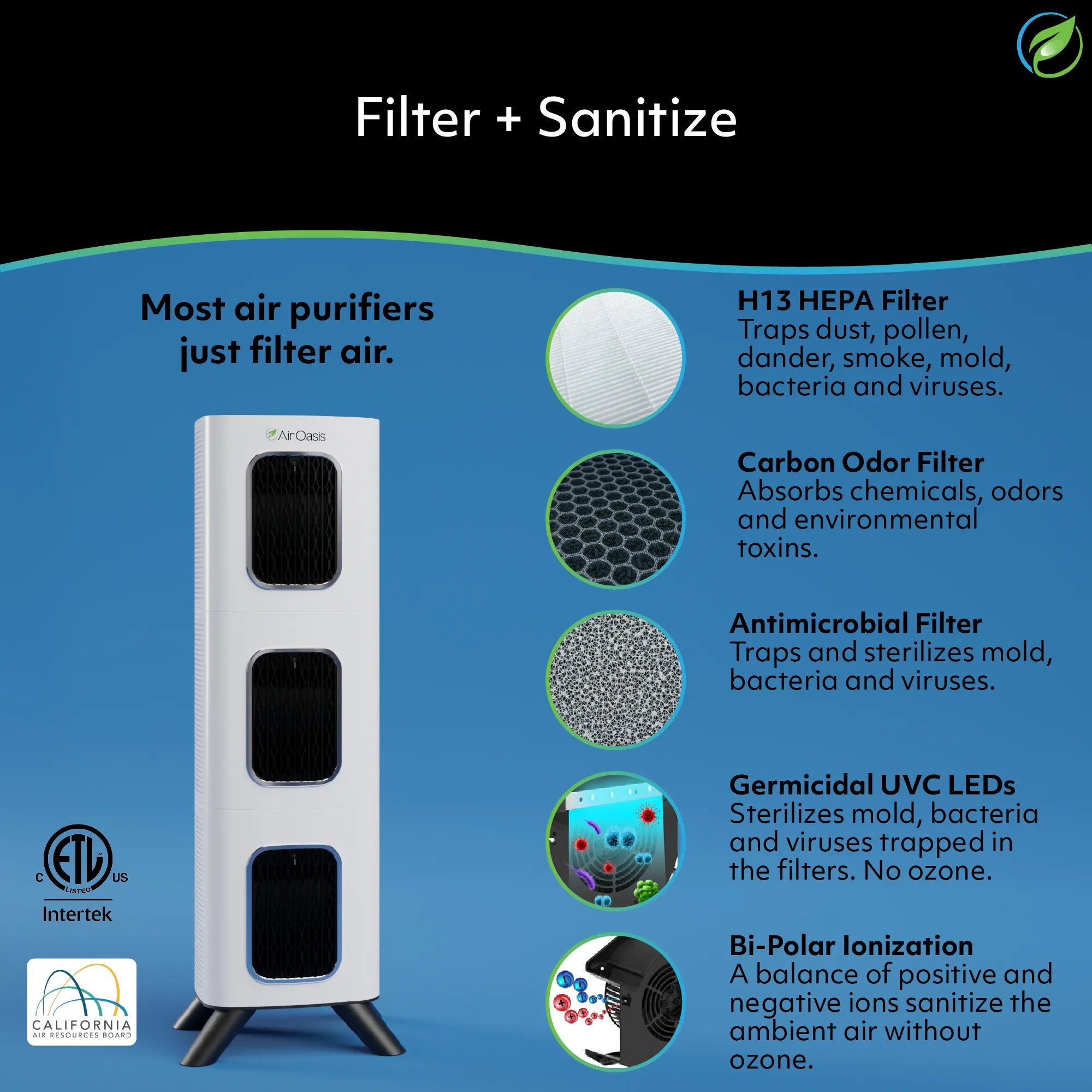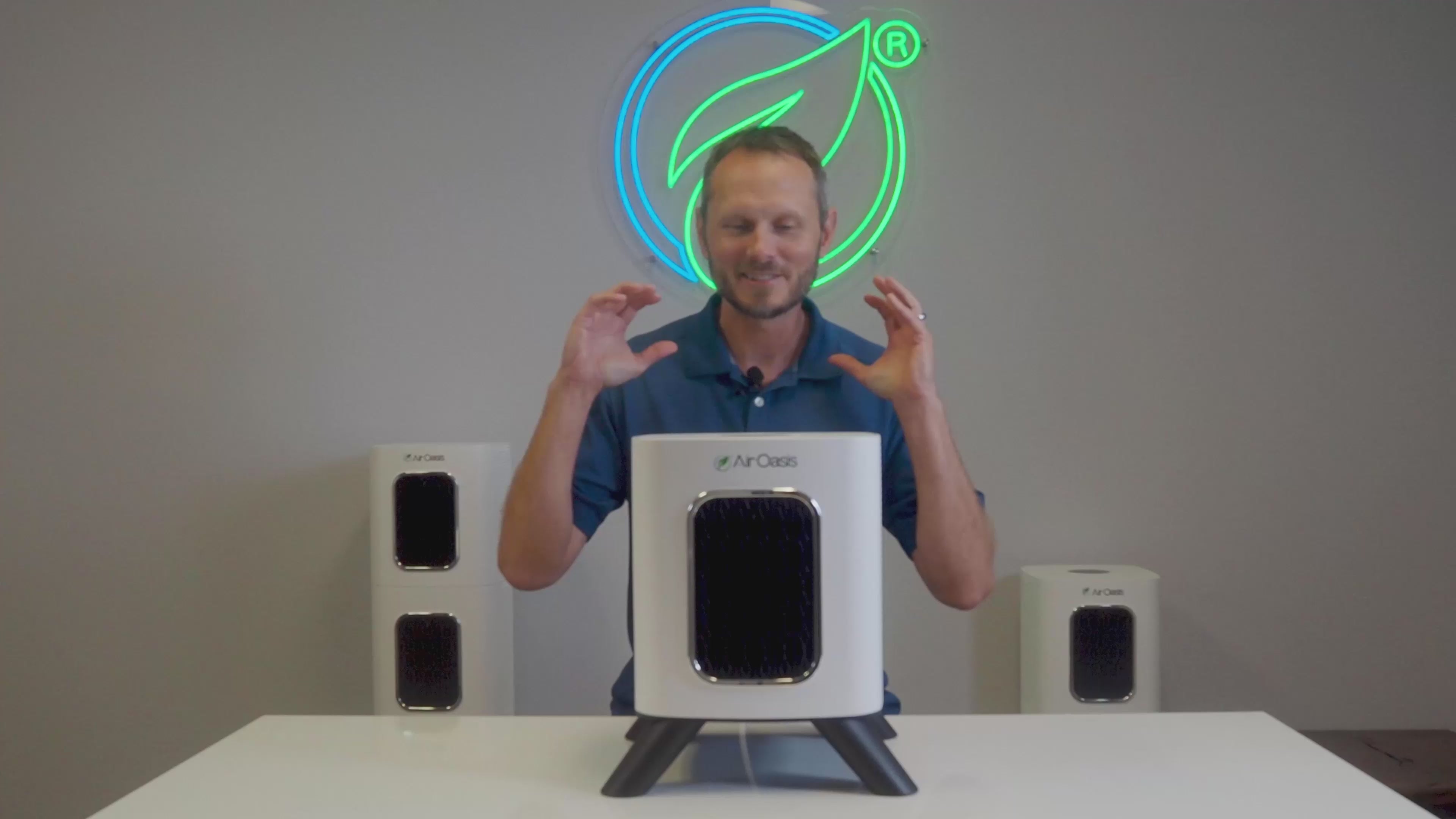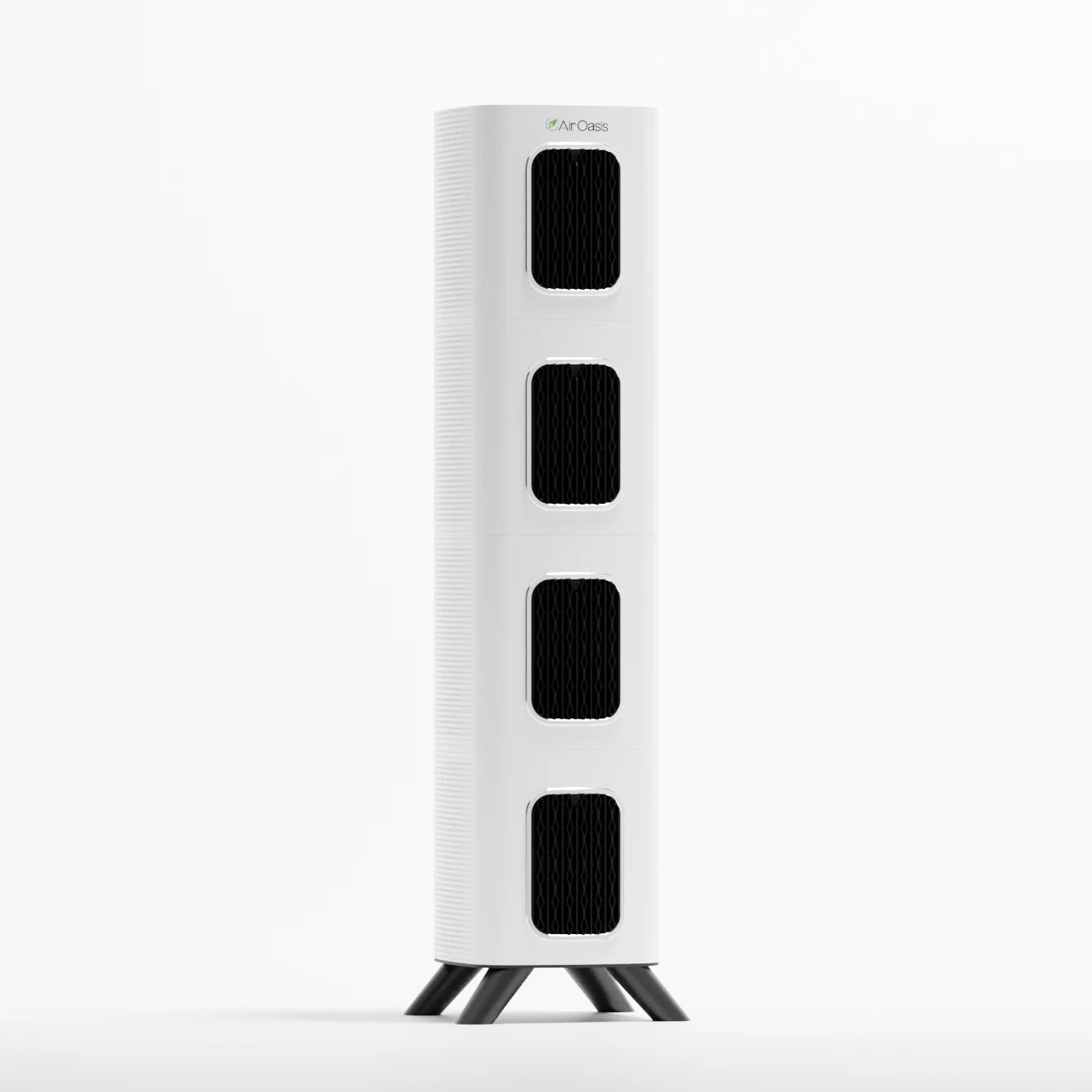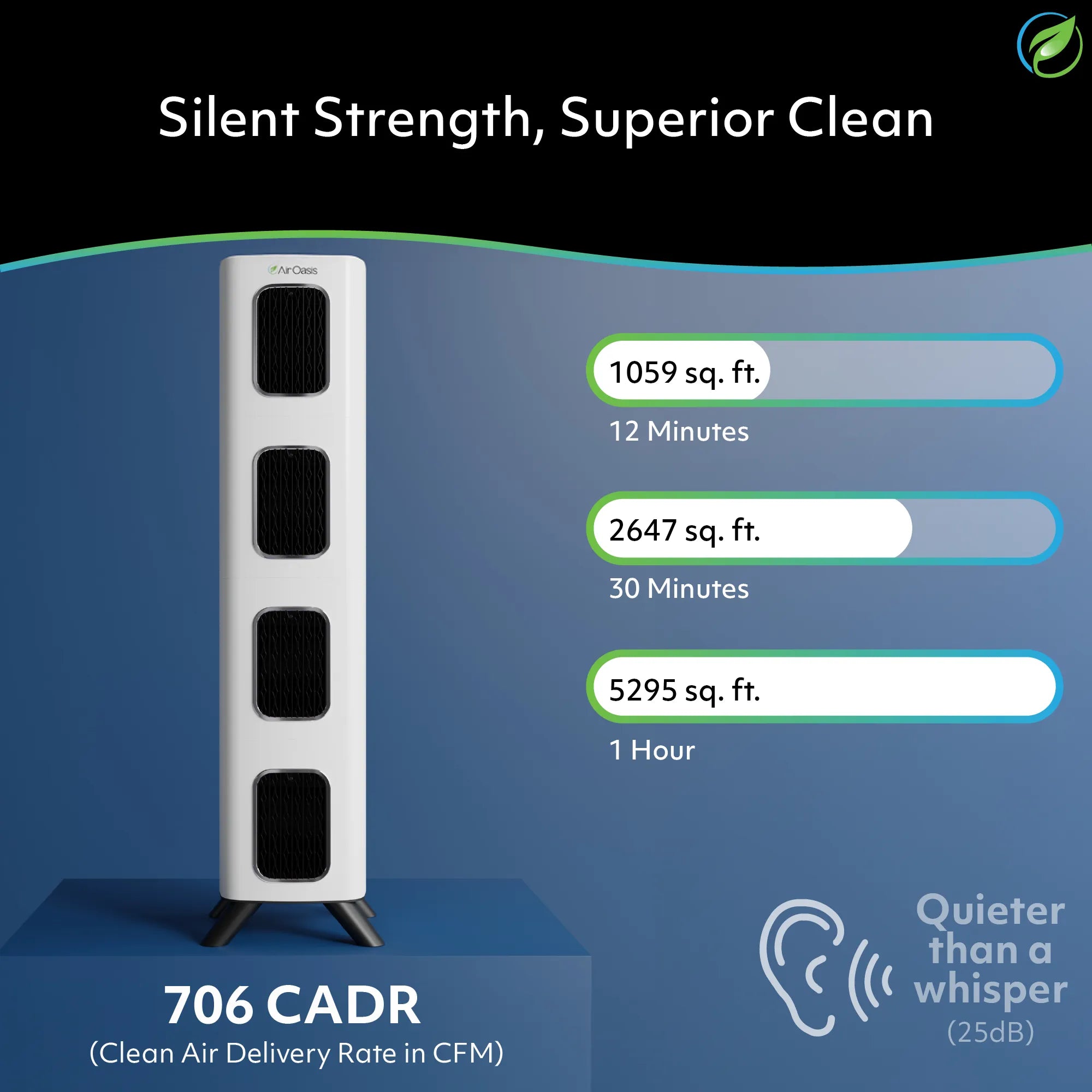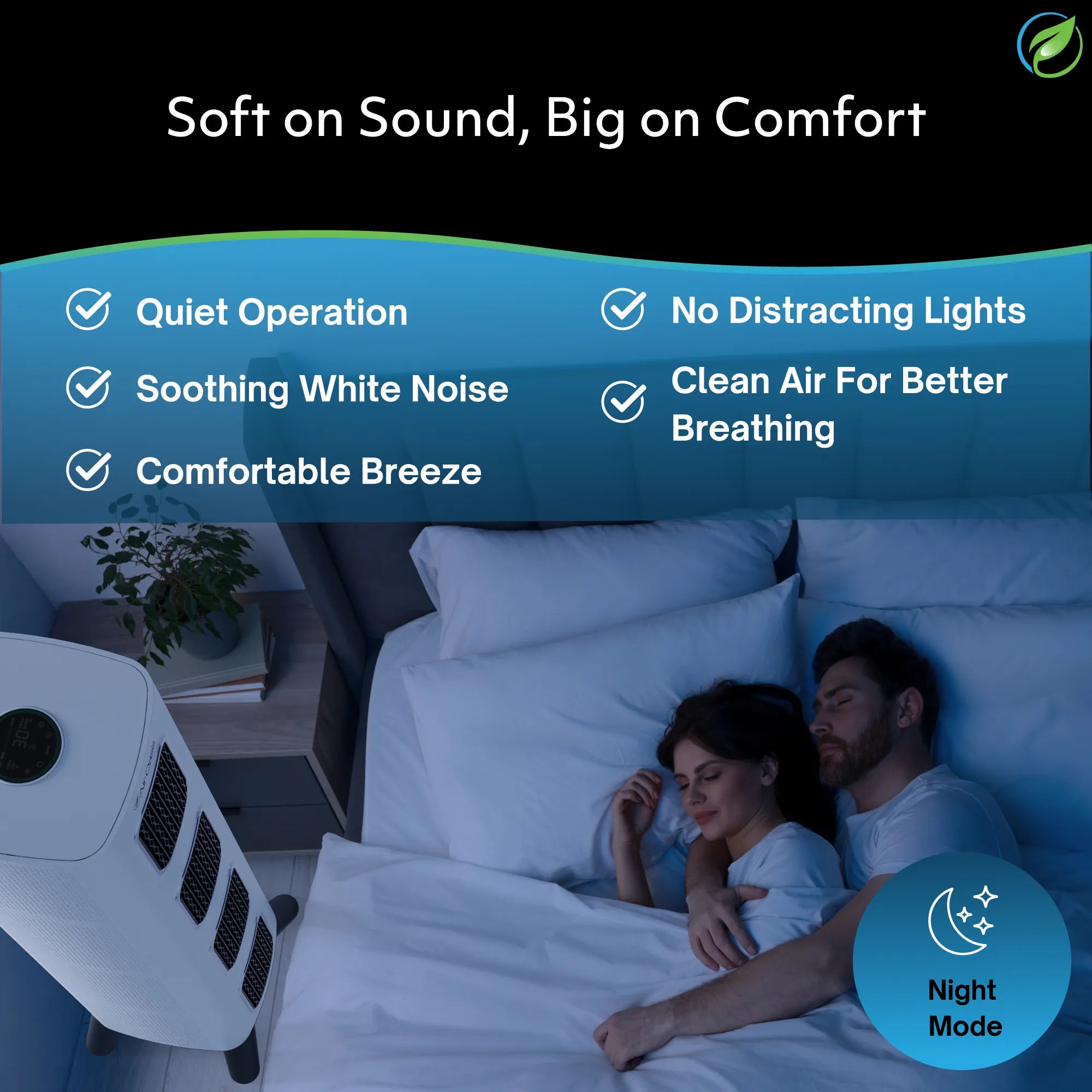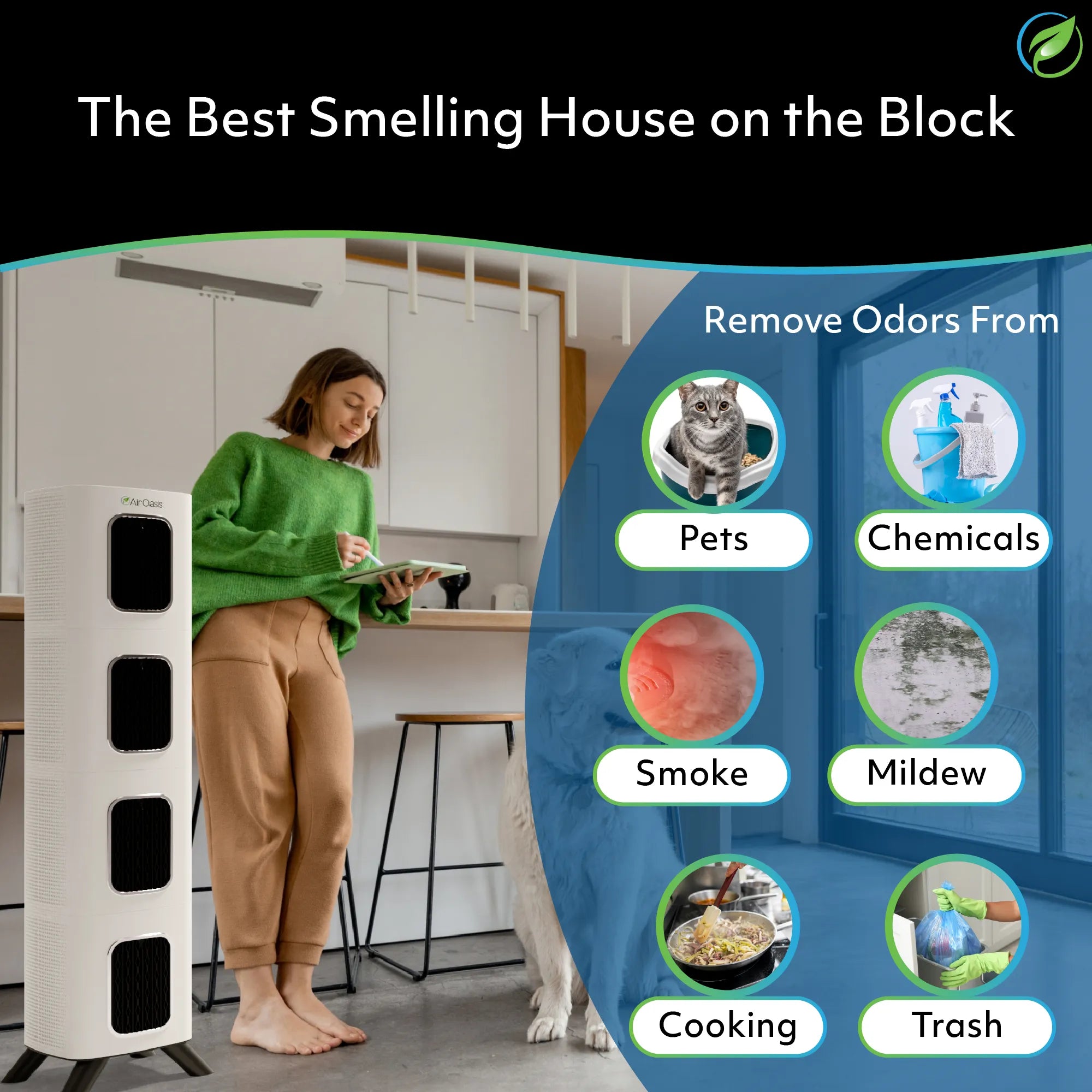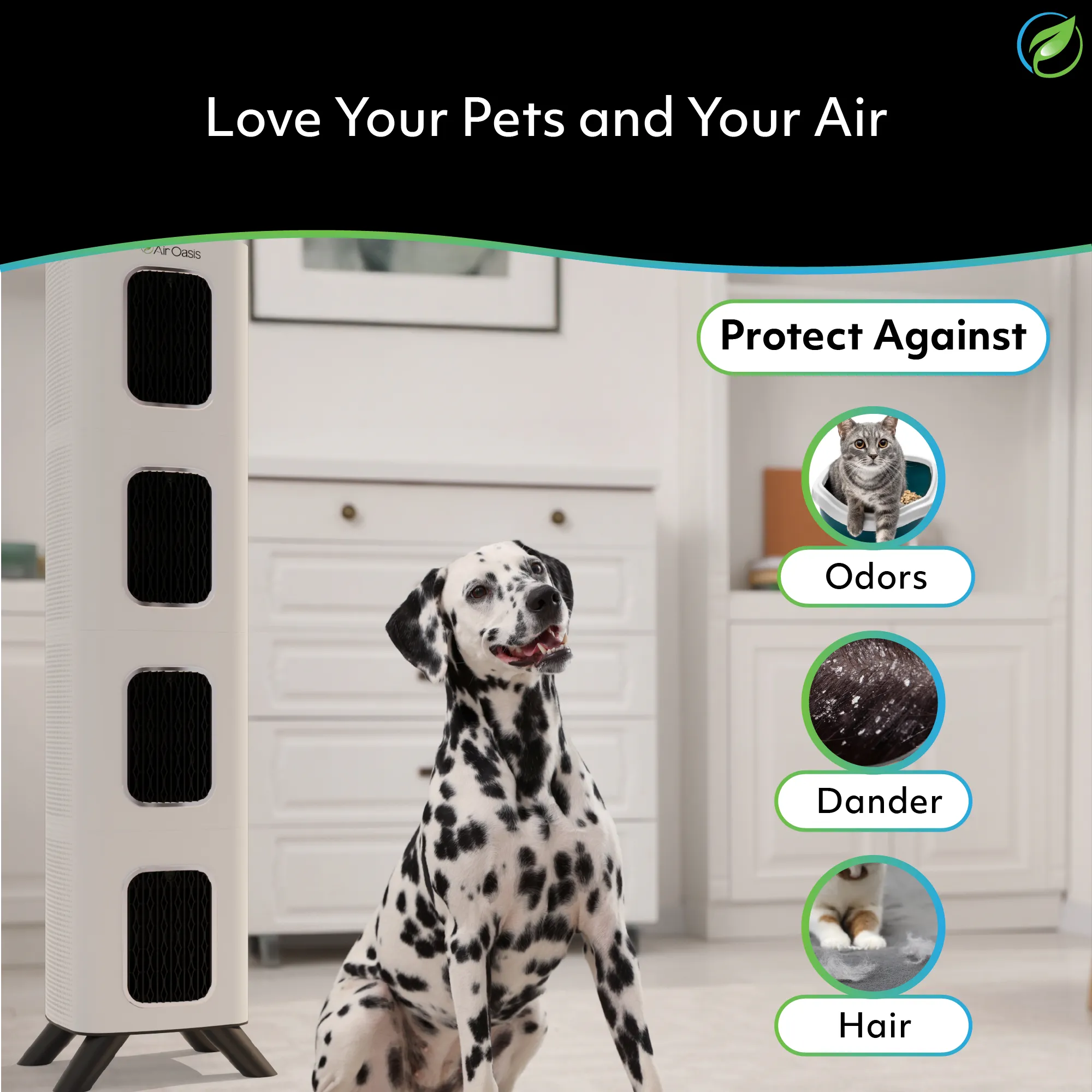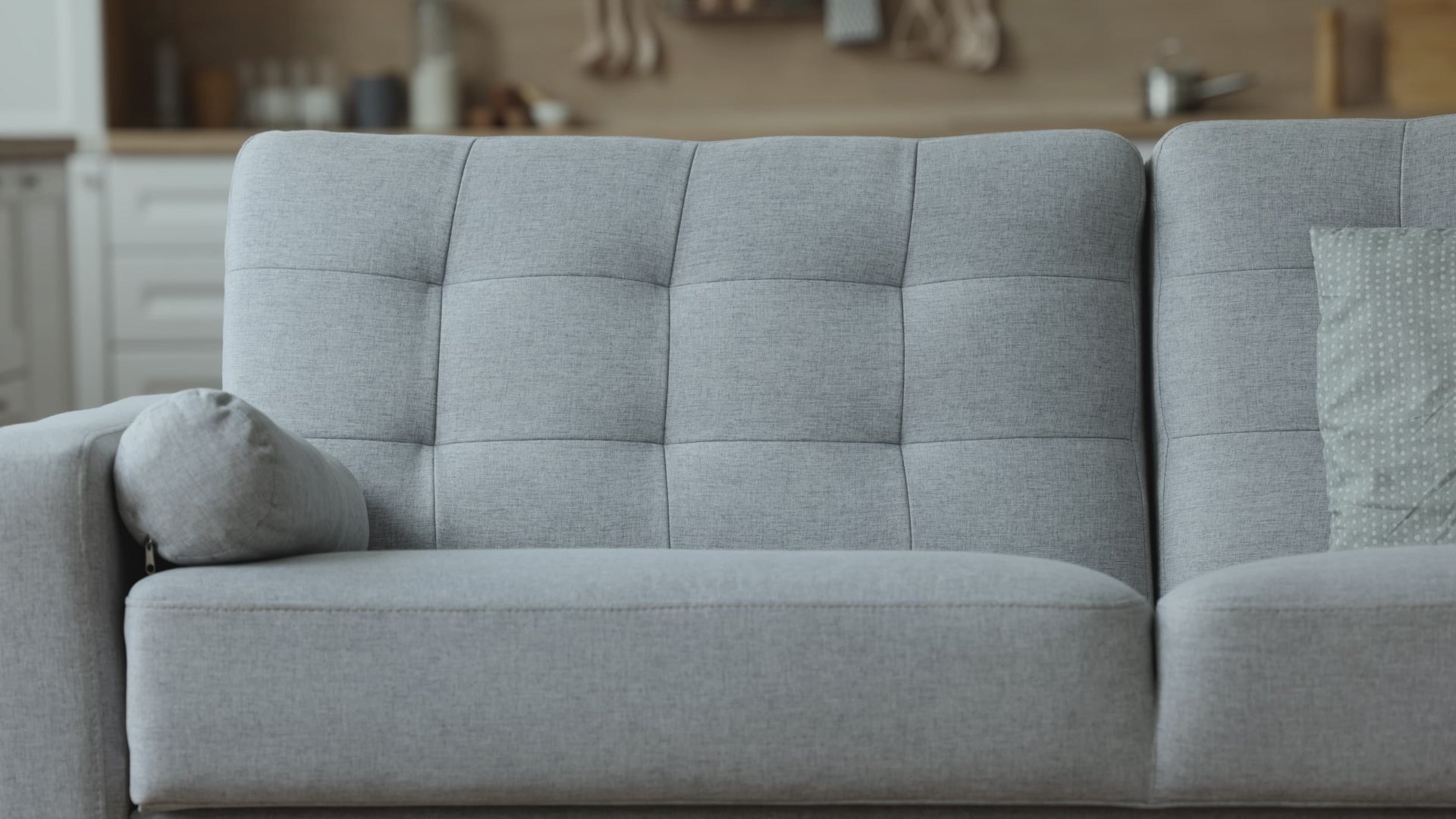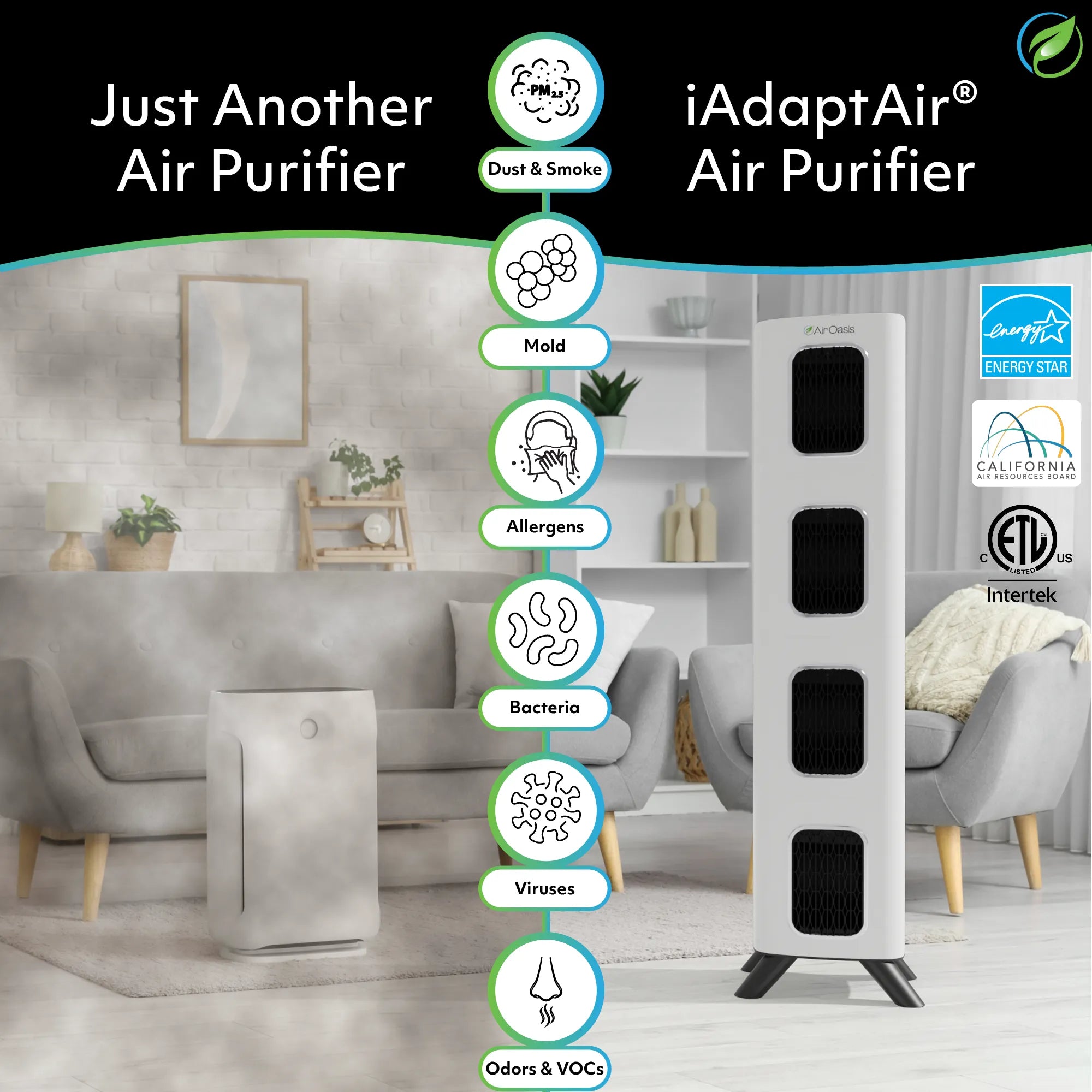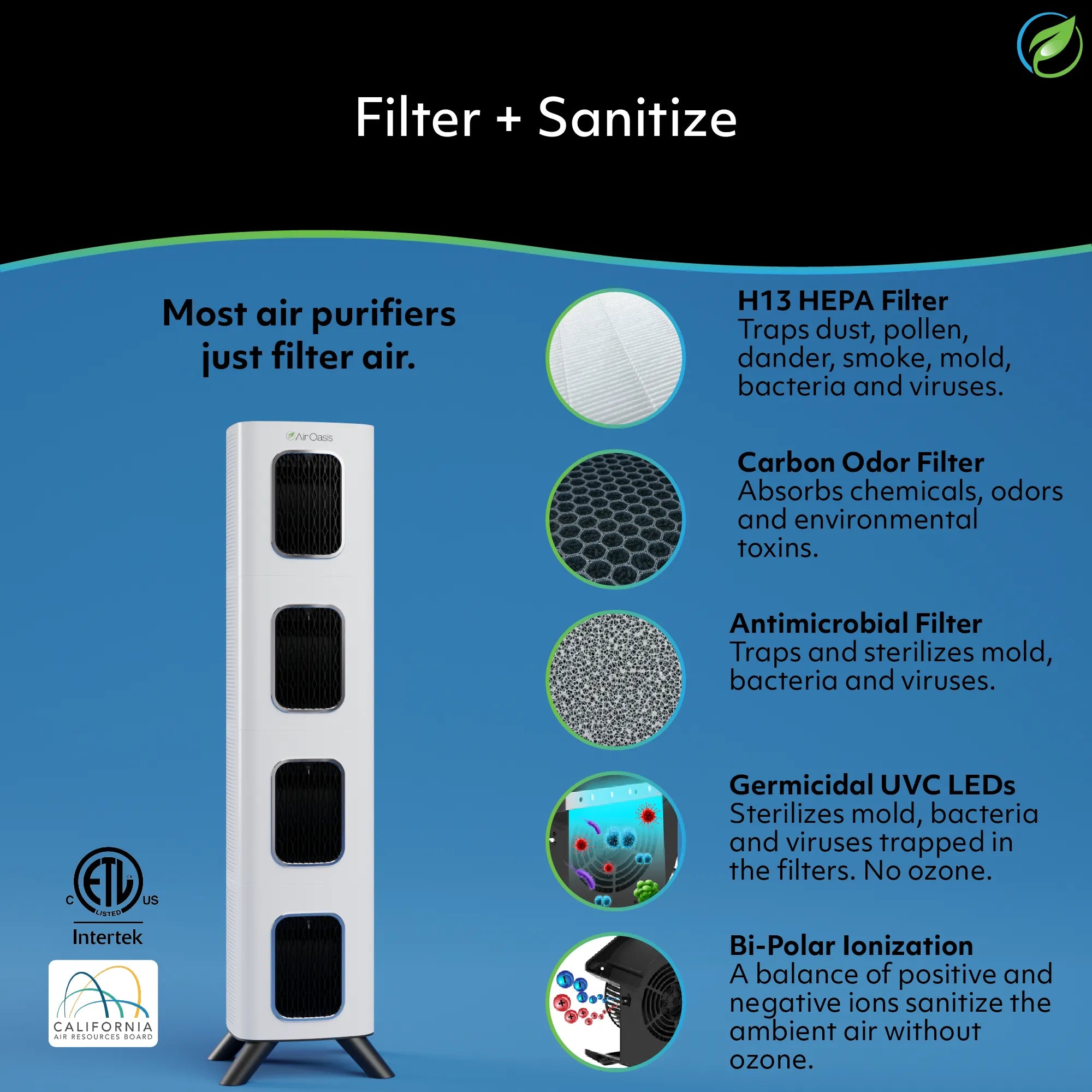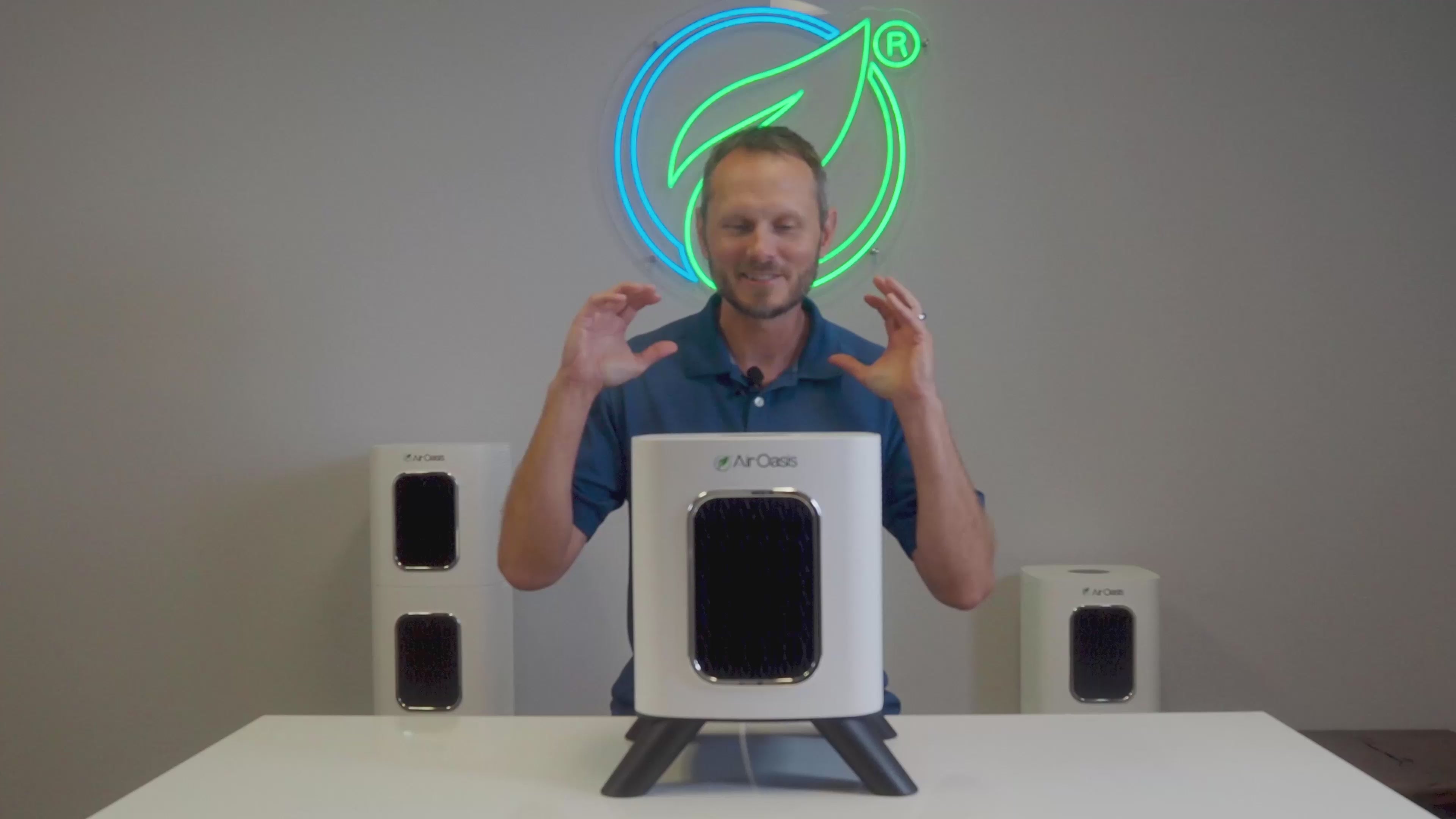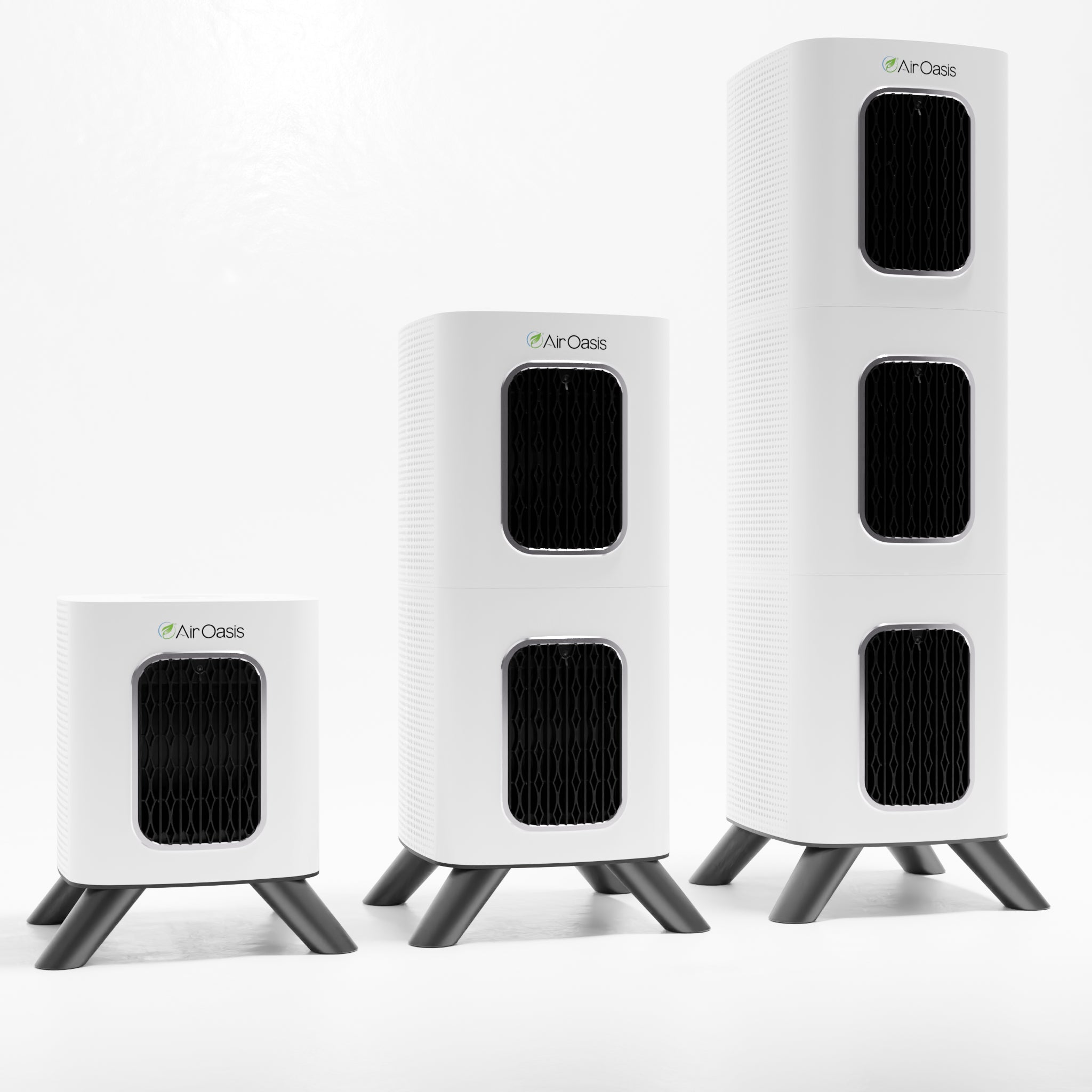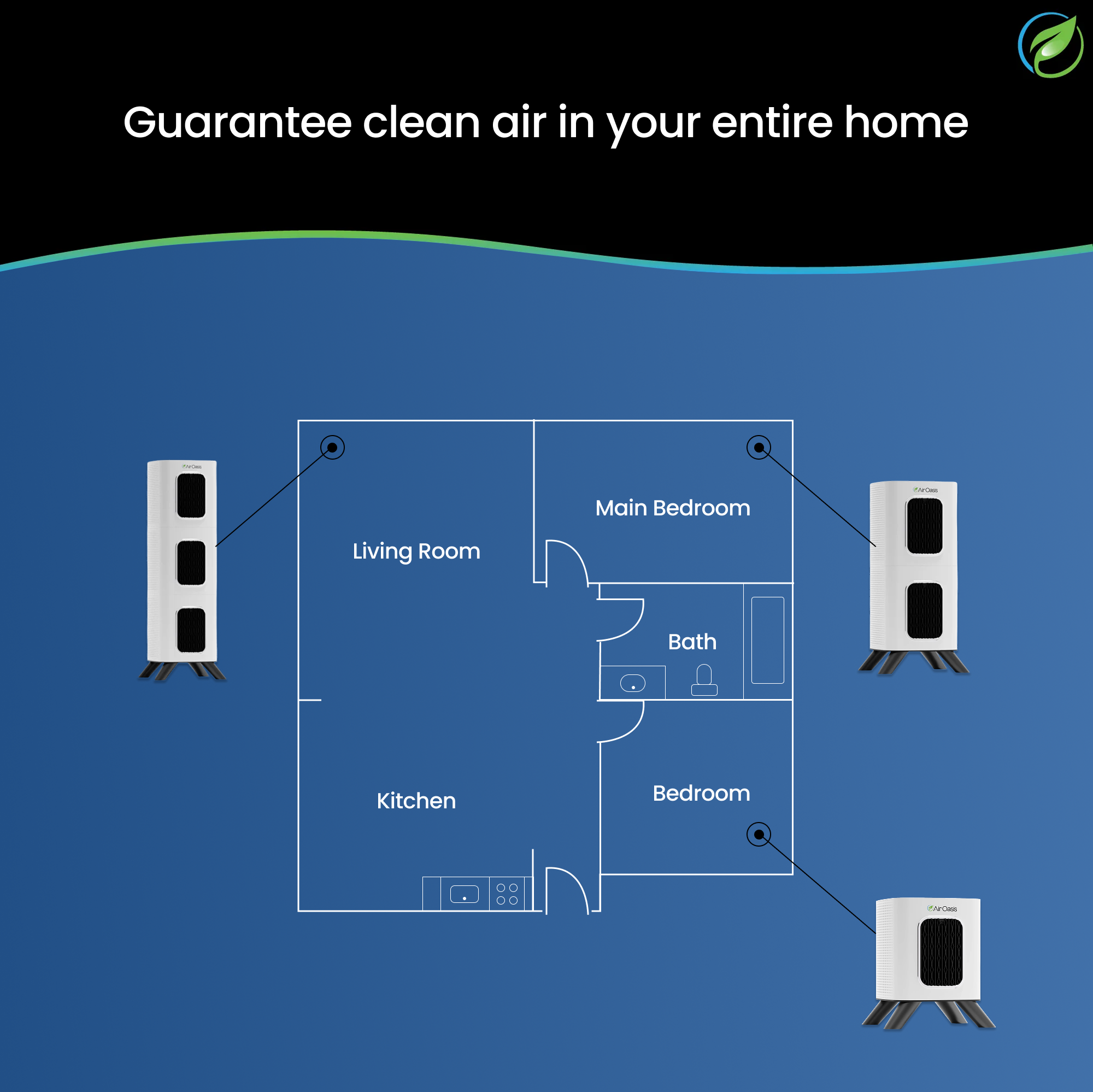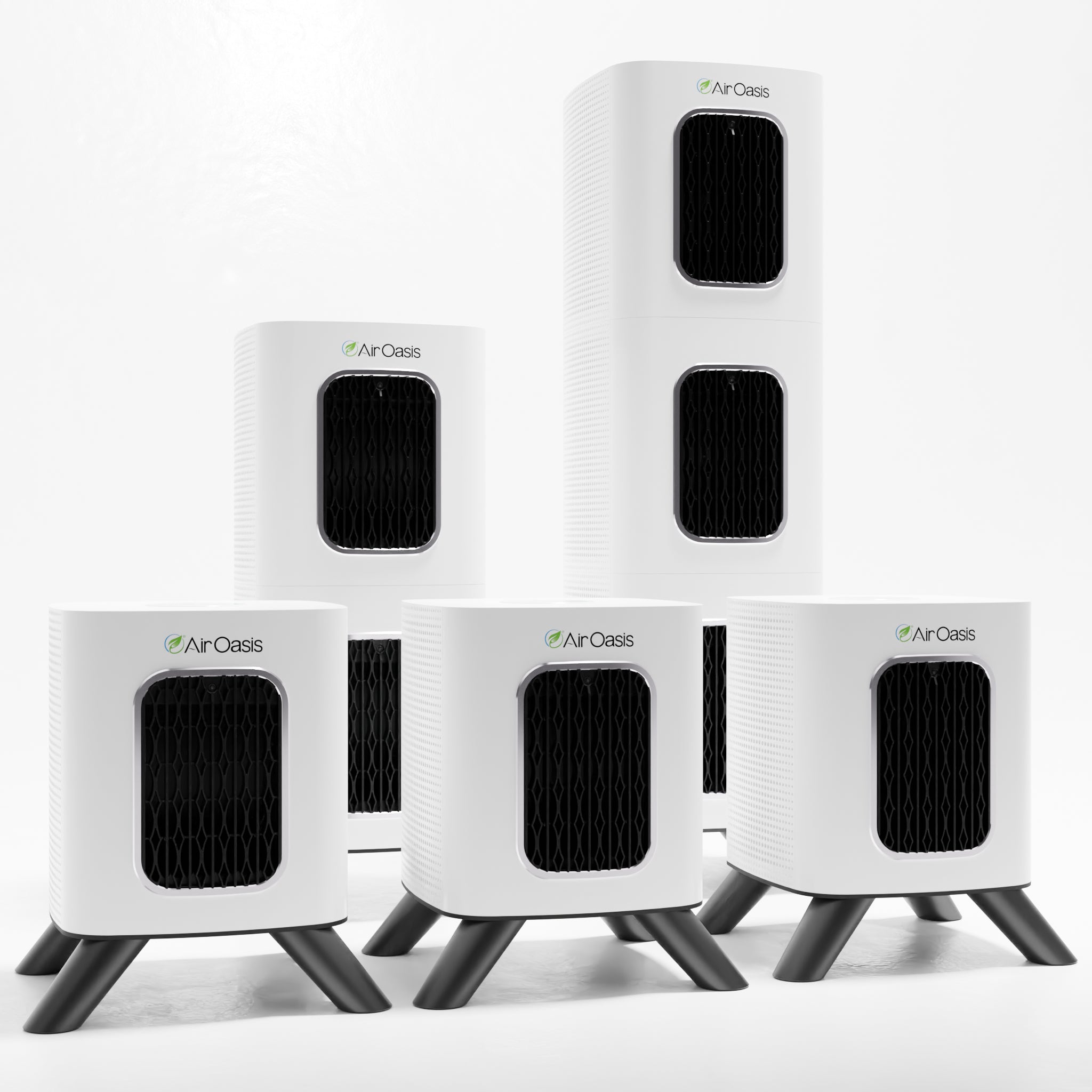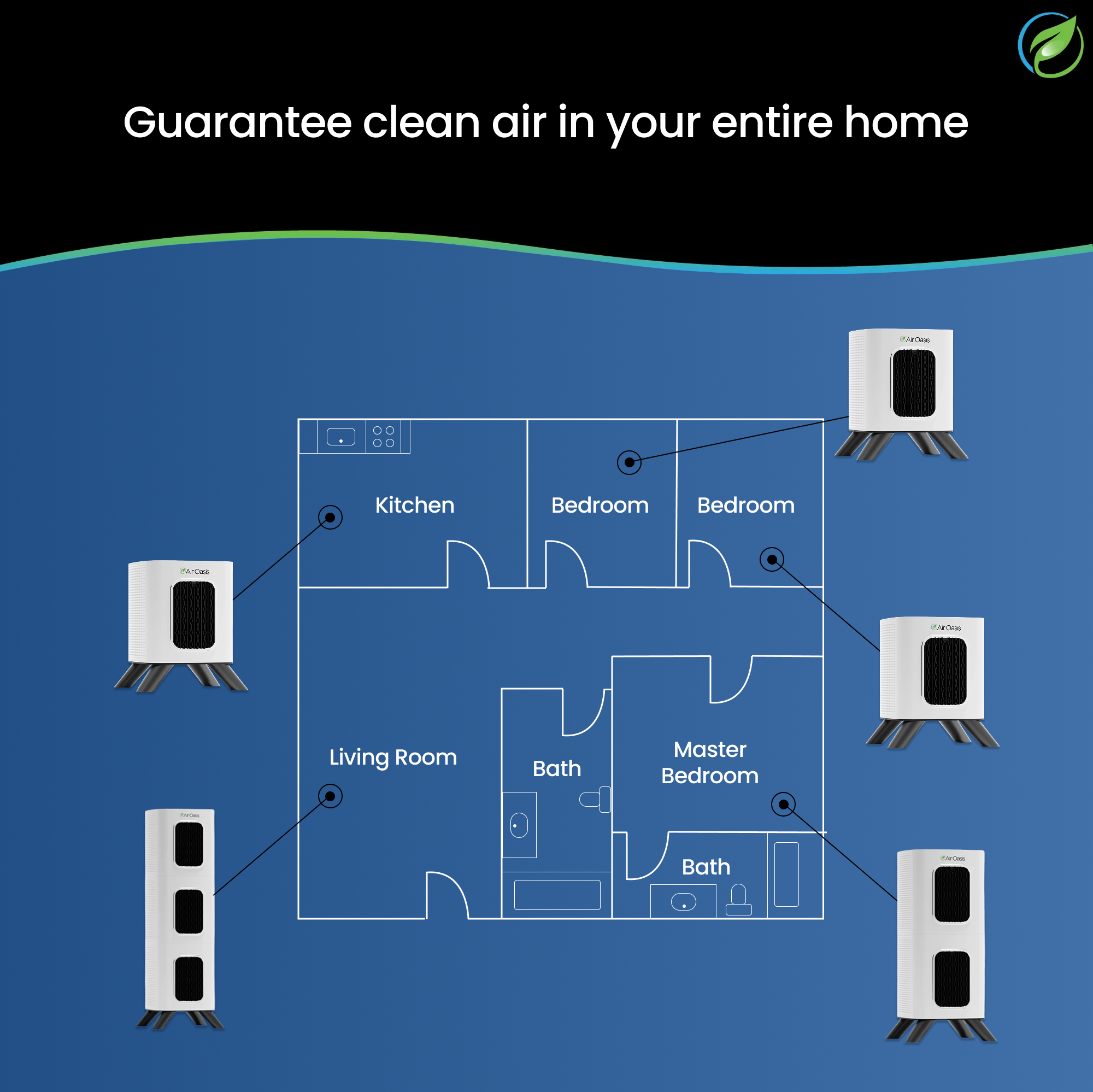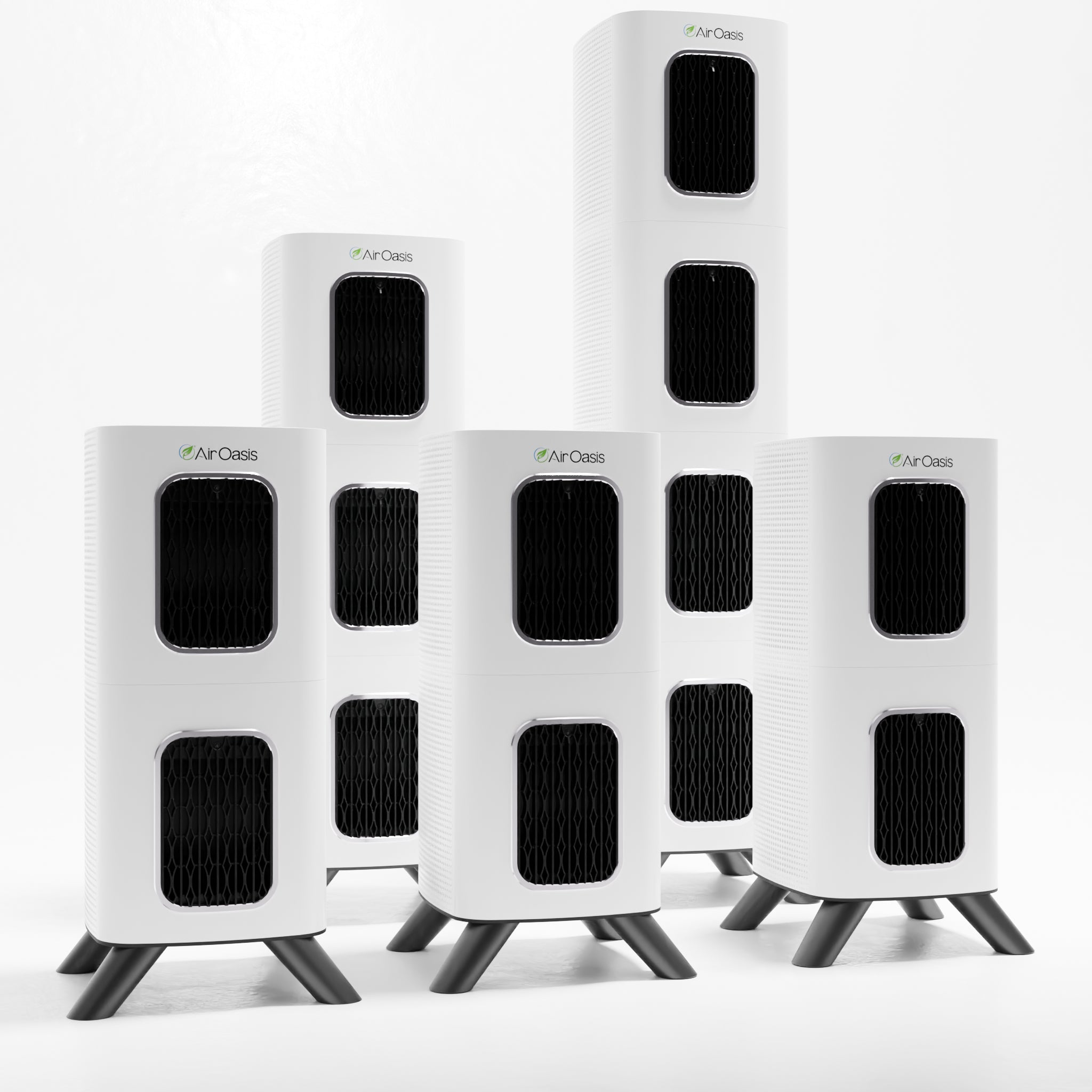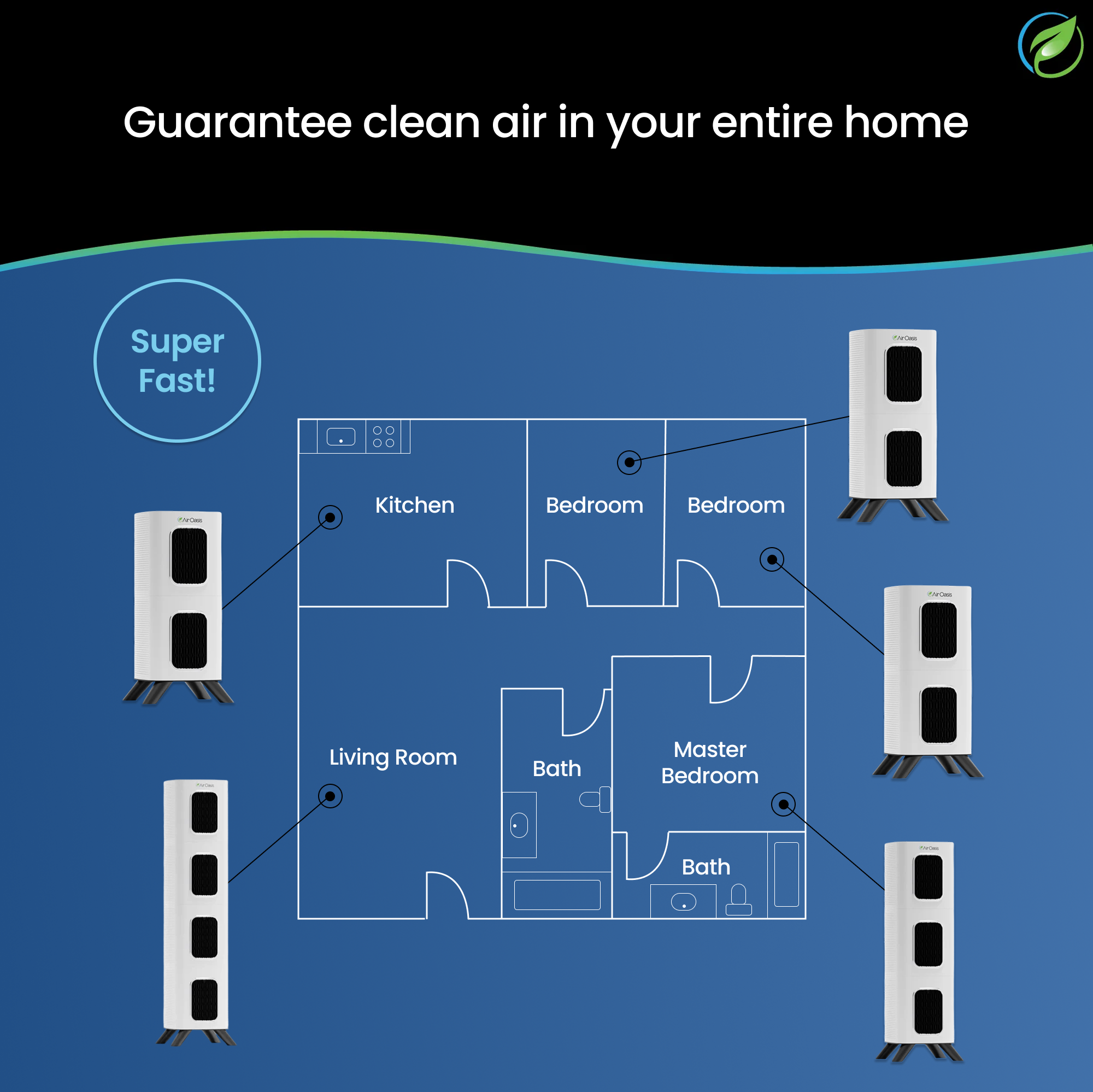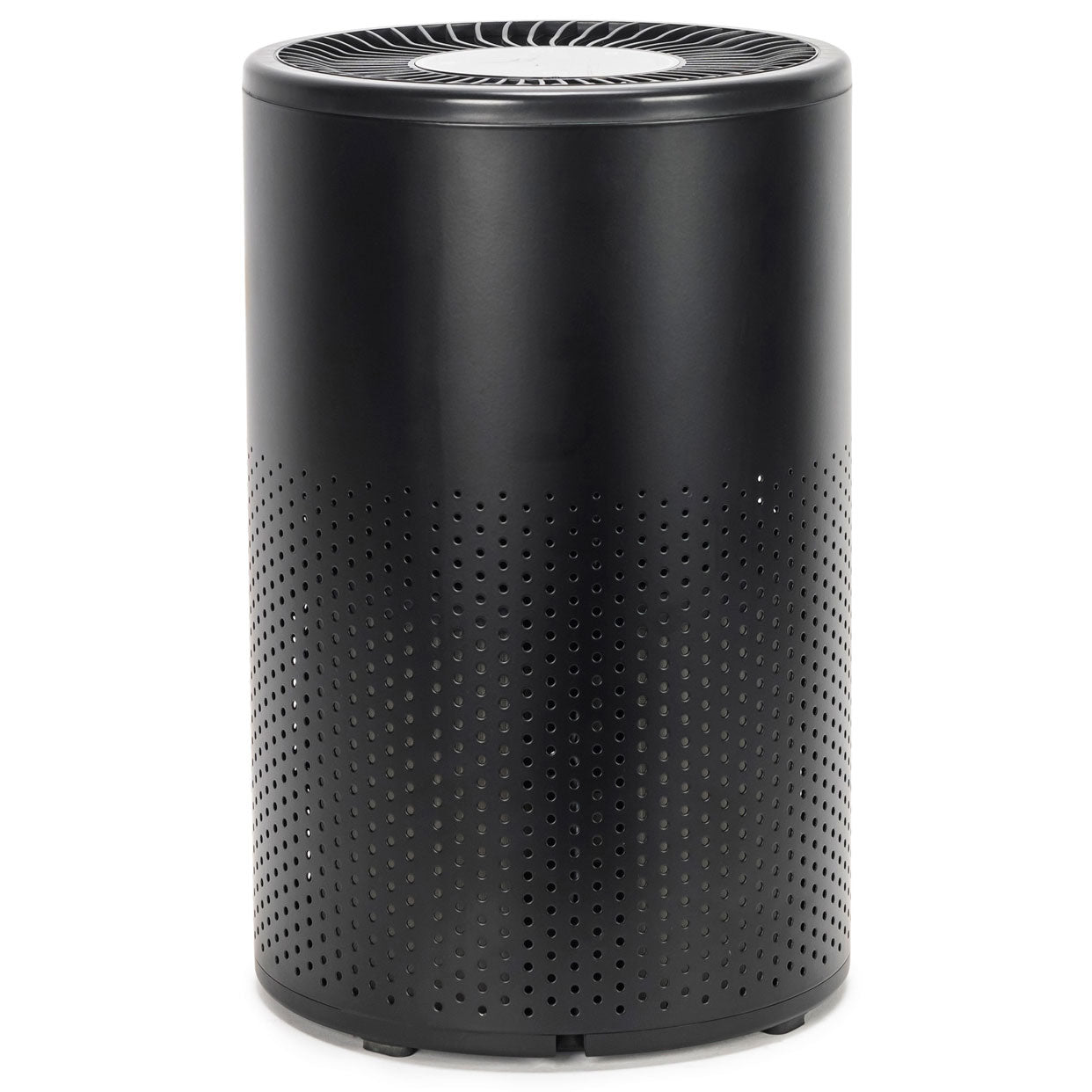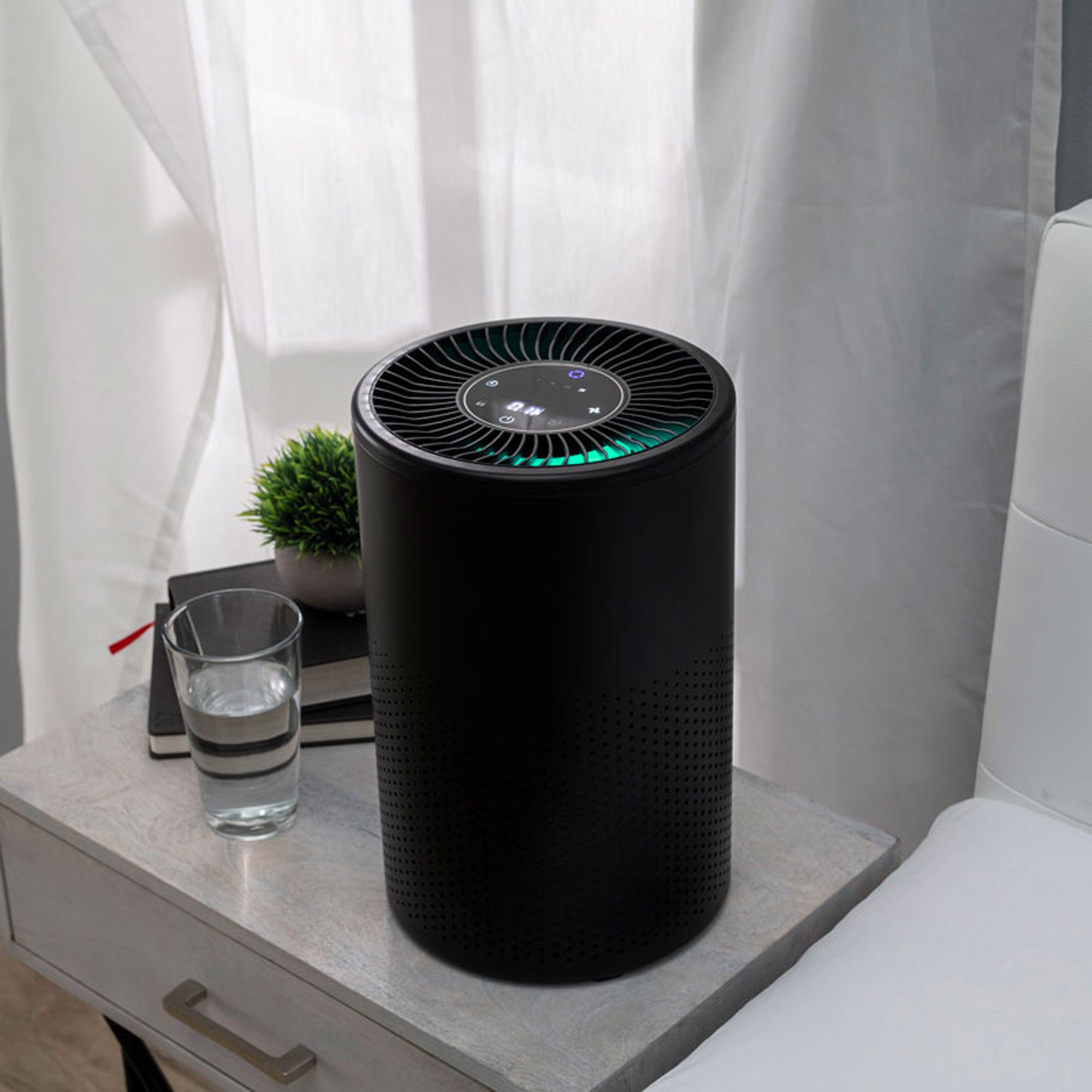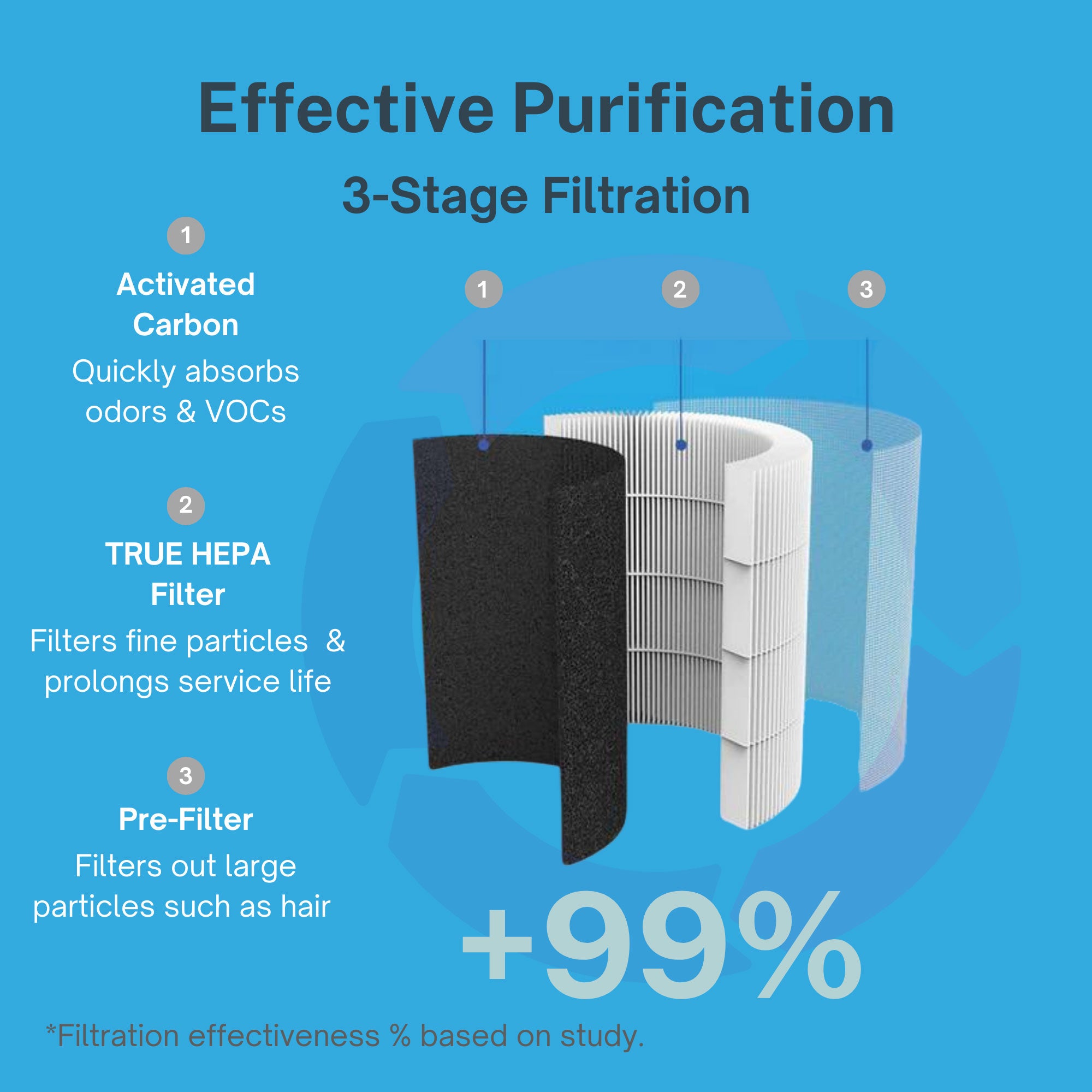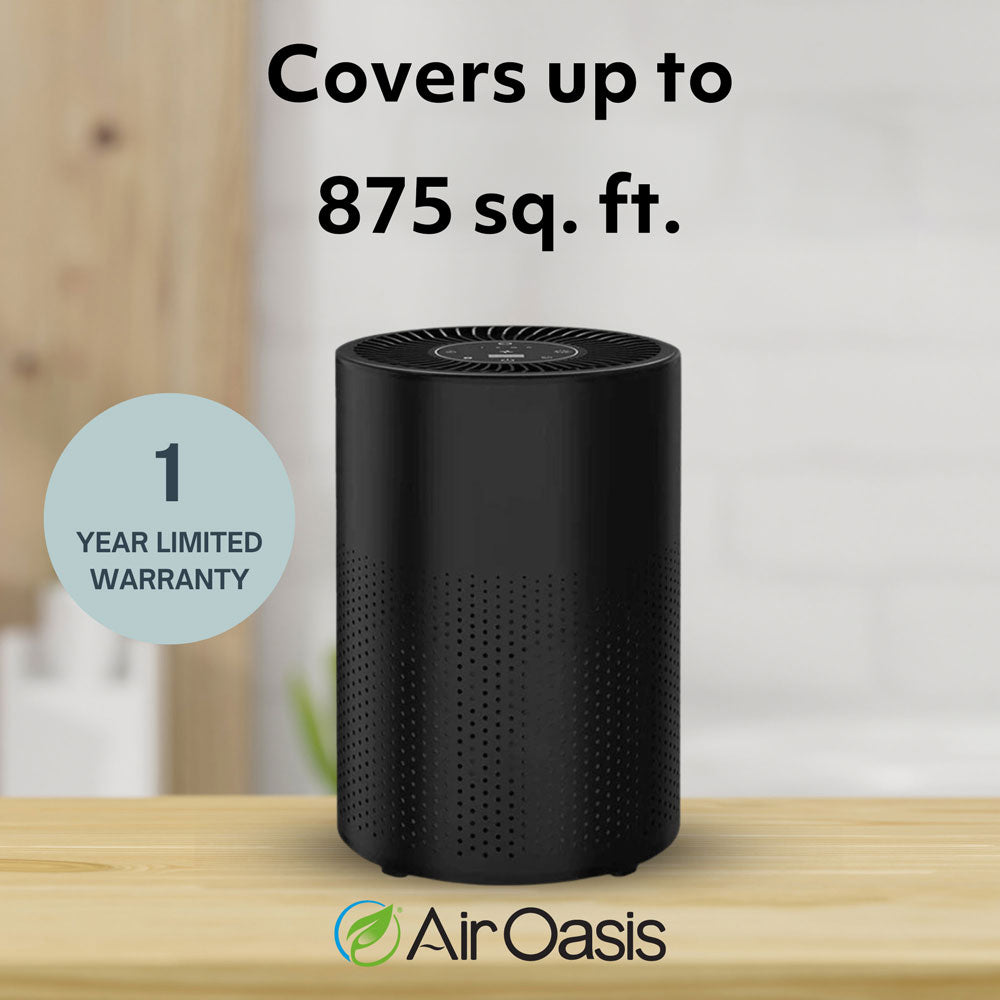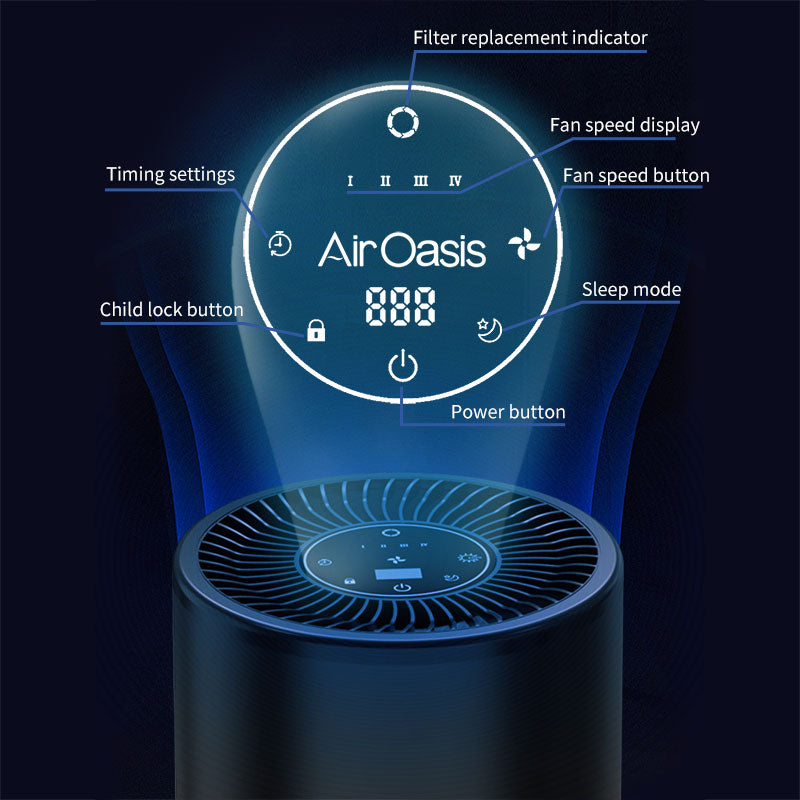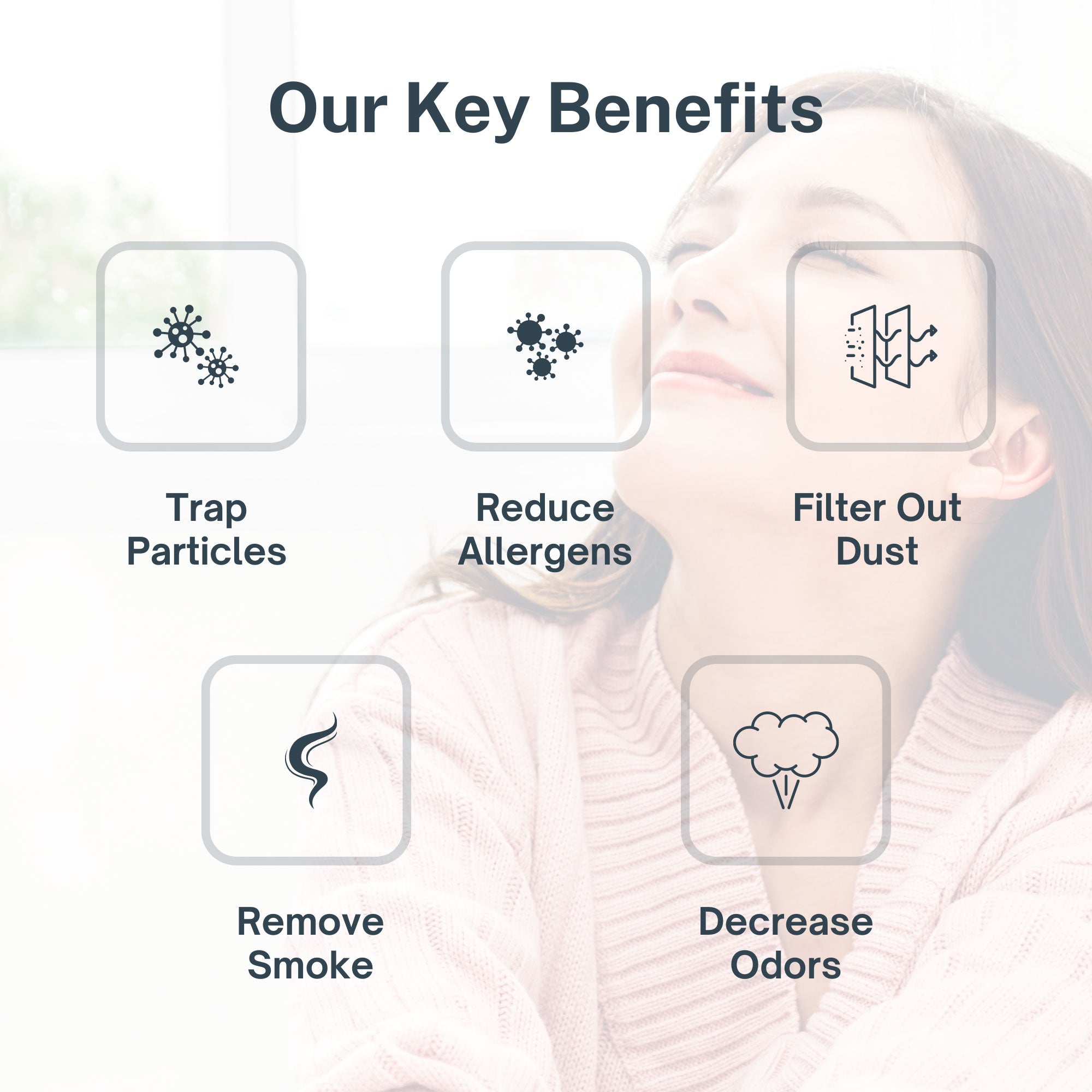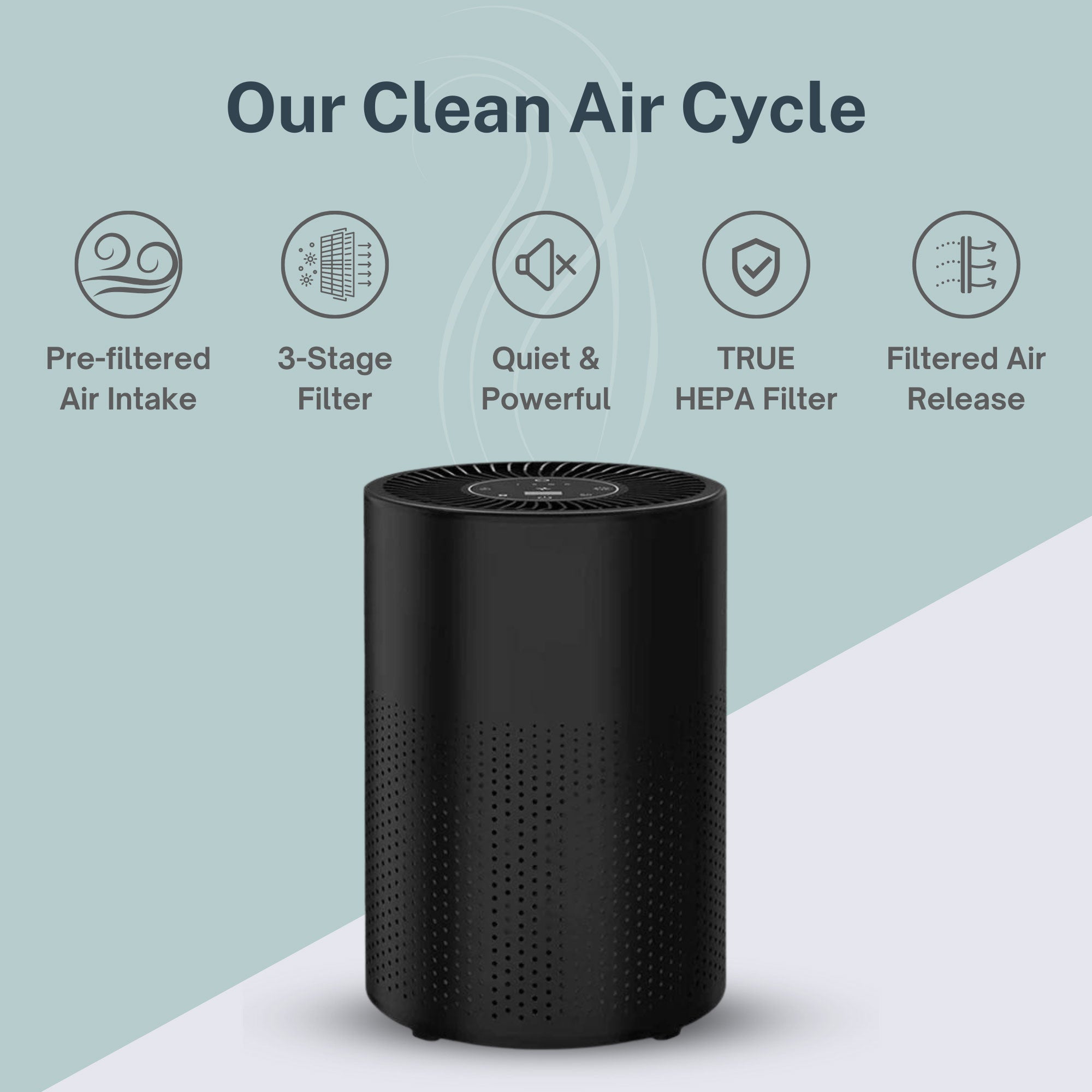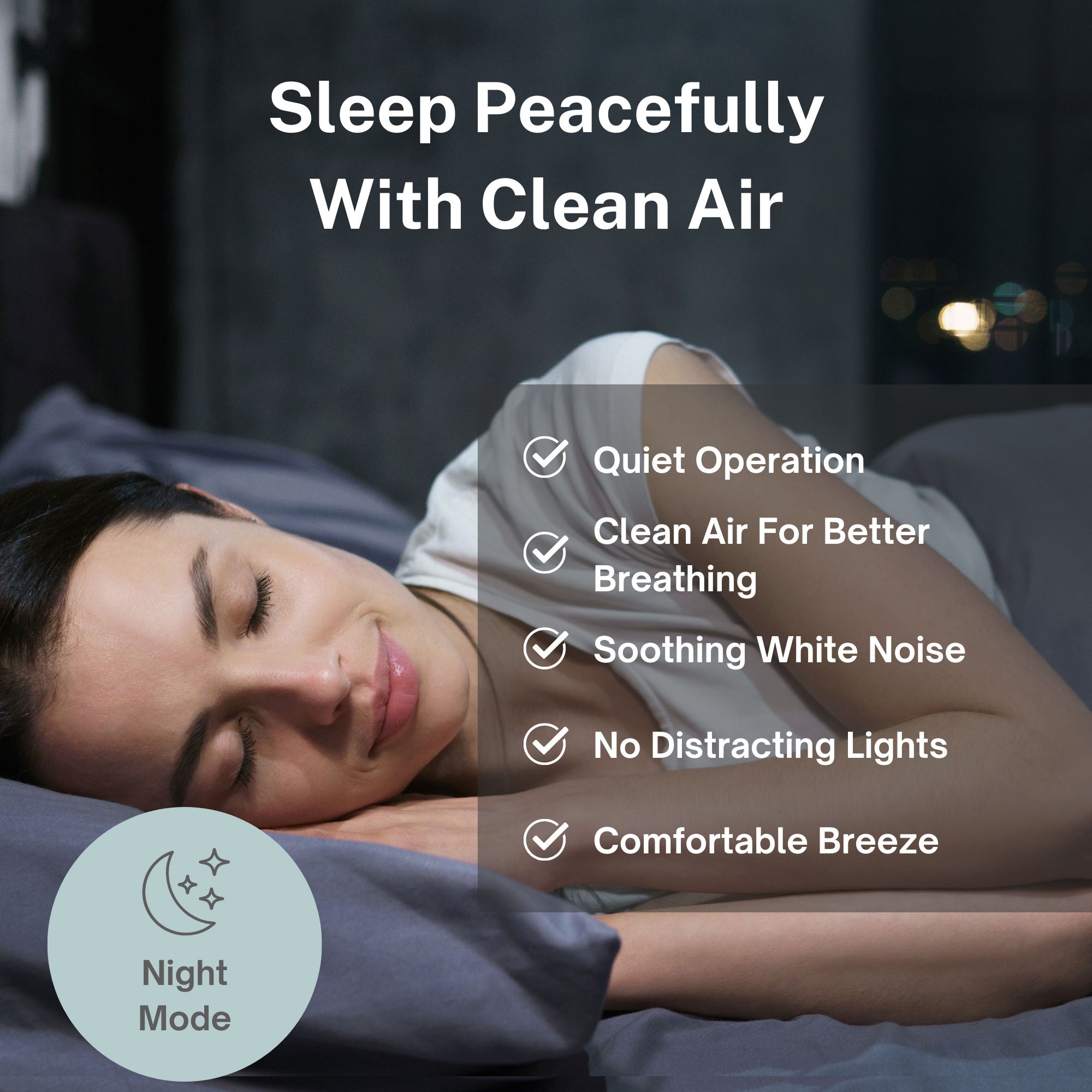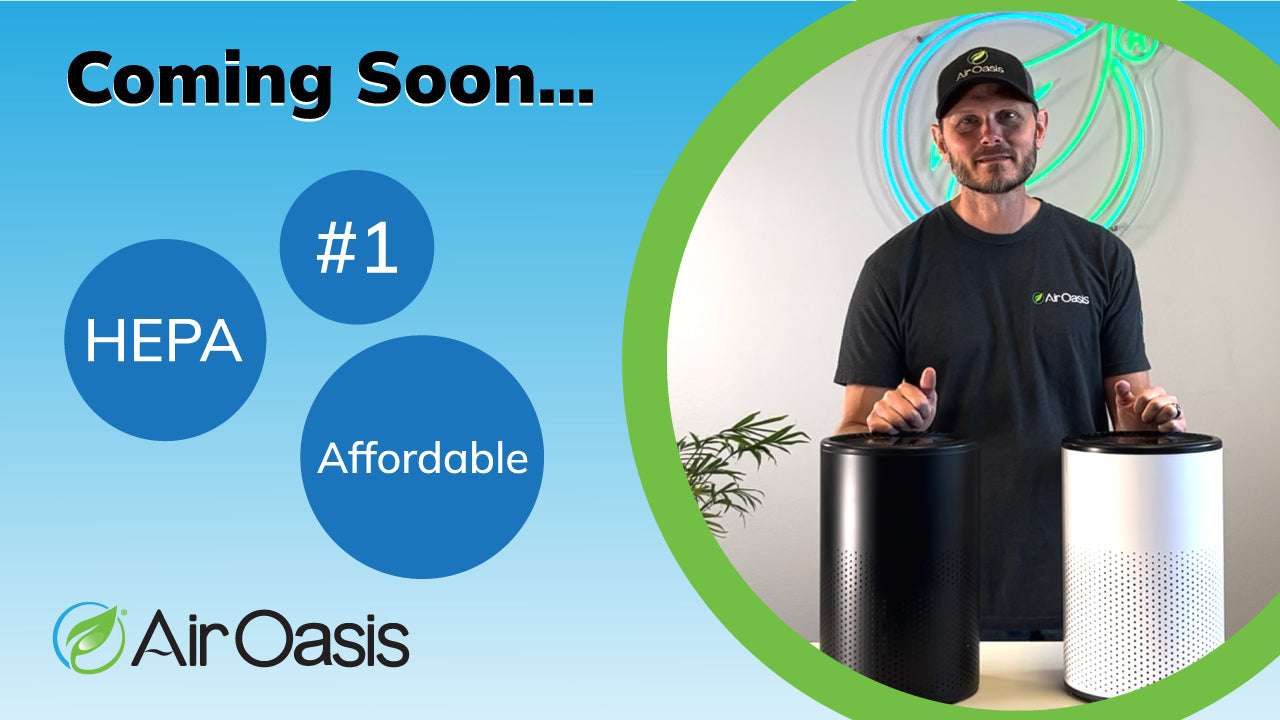Indoor air quality has a significant impact on our health, and in many cases, we need to install an air purifier into our heating/cooling systems in order to help clean the air in our homes. Historically these purifiers have relied heavily on expensive, frequently-replaced HEPA furnace filters to physically remove allergens and toxins from the air. However, there are now more advanced and effective technologies found in various device configurations.
Among the most effective purification technologies are air ionizers, a category that typically works without filters, releasing ions into the air that cling to contaminants and removing them from the air passing through a home’s duct system. More importantly, the ions produced by the best of these devices are long-lasting enough to clean contaminants out in living spaces – kitchens, bathrooms, bedrooms, and so on.
Since there are many different types of ionic air purifiers, our experts want to help walk you through the most important technologies and configurations that you should look for when purchasing air ionizers.
What are Ionic Air Purifiers & How Do They Work?
Ionic purification occurs when a device emits ions that travel into a home’s airspace and come in contact with airborne and surface-borne contaminants. These ions damage contaminants and stunt their ability to replicate, reducing their numbers and purifying a home. Some ions cause small airborne particles to clump together, which become too heavy to float. These clumps then fall out of the air, settling on a surface, ready to be wiped up by a homeowner.
Not all air ionizers are the same, however. Below we’ve outlined the most common and noteworthy ionizing purification technologies.
UV Stick Lights
Ultraviolet germicidal irradiation occurs when certain lights shine UV rays on contaminants to deactivate them – damaging their DNA so they stop producing and quickly die off. This technology is impractical for homeowners because they’re only effective if they are shining on surfaces from two to four inches away. Although UV light purifiers have been sold as whole-home air purifiers, they’re realistically only useful for reducing mold buildup on damp AC coils. By strict definition, however, we wouldn’t consider these units to be ionic because they do not produce ions.
Ozone Generators
Ozone is a naturally occurring ion in nature that, even at very modest levels, can effectively neutralize odors. At .01-.02 ppm, ozone is safe to breathe for extended periods, and regular household air cleaning is feasible with a mixture of low amounts of ozone ions and others. For heavy-duty jobs such as site clean-up, mold remediation, or clearing smoke odors from rooms, higher amounts of ozone can be very effective. The drawback to these higher concentrations is that rooms can't be occupied during this cleaning cycle because of potential negative health effects.
Needlepoint Ionizers
When electron voltage runs through metal needles or certain brush ends, it actively produces negative ions. Needlepoint ionization produces high volumes of negative ions that travel through the air until they attract airborne particulates that become too heavy and settle to the floor.
While needlepoint ionization effectively removes smoke without reducing airflow, its ions have a very short half-life and can’t completely circulate a home or purify walls or surfaces. Negative ions simply aren’t as powerful as hydroxyl ions and hydroperoxide ions that can more effectively destroy viruses, bacteria, germs, and chemicals. One drawback is that needlepoint ionizers create excessive static electricity that results in particulates sticking to walls and surfaces close to the device. This is commonly known as “black wall syndrome.”
Bi-Polar Ionization
Bi-polar ionization is a more advanced and effective air purification technology that emits a blend of positively- and negatively-charged ions that attract oppositely-charged contaminants, building heavy clumps that fall out of the air. These ions work to deactivate single-celled, carbon-based organisms such as fungi, viruses, and bacteria, whether they’re in the air or resting on surfaces in a home.
Basic Photocatalytic Oxidation (PCO)
Building on UV light technology, basic PCO creates a photocatalytic reaction by shining a UV light on a basic catalyst coated with titanium dioxide (Ti02). This reaction produces short-lived hydroxyl radicals that attempt to purify airspace. However, these radicals don’t last long enough to travel very far, limiting the effectiveness of basic PCO compared to more advanced forms.
Advanced Photocatalytic Oxidation
Whereas standard PCO only produces short-lived hydroxyl radicals, advanced PCO technology uses a more complex catalyst formula to create a much more effective mixture of additional ions. These ions actively hunt contaminants and damage their DNA to stop them from growing, eventually killing them off. Advanced PCO is also known to be especially effective at controlling odors. Just be sure to pick a brand that doesn’t over-rely on ozone. Odors can be caused by trash, musty AC systems, smoke, and even off-gassing from furniture, paint, carpet, and household cleaning products. The proper Advanced PCO product will keep your air both healthy and pleasant.
What is the Right Size Air Ionizer?
Determining the technology and effectiveness of an air purifier is only the first step. You also have to make sure it’s capable of fully cleaning a room or home. This means you may want a small or large whole-home air purifier or perhaps a portable air purifier for a single room.
To help make your decision, start by checking the square footage the air purify states it can capably clean. In-duct air purifiers can cover anywhere from 800 to 6,500 square feet in a home or commercial space, while portable air purifiers (wall plug-in devices) cover areas as small as 250 square feet up to spaces as large as 5,000 square feet. Smaller purifiers are best for small, closed-off spaces with poor airflow, such as single bedrooms, cars, or RVs.
Calculating the square footage of a room is simple: Measure the length and width of your room in feet and multiply the two numbers to get the square footage. The caveat to the square footage denoted by air purification products is that these numbers are based on rooms with eight-foot ceilings. Rooms with taller ceilings will need air purifiers that cover a larger range than a space’s nominal square footage.
Another important consideration is the activity of a given space. A locker room or gym requires more purification “horsepower” than a regular classroom, for example. The number of people in a space also matters. And if someone is very sensitive to allergens in a space, you may want to use a more powerful purifier. Particularly in larger commercial spaces, you can use double or triple the number of purifiers to more effectively clean your air. And if a home has multiple air conditioners, it’s best to put a purifier in each AC unit.
How Much Will An Air Ionizer Truly Cost?
Replacement parts and maintenance are a large factor when it comes to ionic air purifiers. Over the course of a year, replacement HEPA filters can cost more than the original price of the air purifier itself. However, most air ionizers don’t use physical filters and have no annual maintenance costs making them much less expensive overall by comparison.
Because PCO purifiers use UV bulbs, they will require occasional replacement. Most companies provide a one-year warranty for the bulb, while some provide a two-year warranty. In some purifiers, though, you may need to replace the entire PCO cell that houses the UV bulb. And the cell’s catalyst coating, which forms its cleansing ions, can degrade over time, requiring a new coating.
Another important factor is how much an air purifier will cost in power consumption. To determine annual electricity cost, first determine the watts of consumption used by the purifier under consideration. Then use the following equation to determine the annual electric costs of running the air purifier:
Annual Electricity Cost = (Watts/1000) x (KWH-Kilowatt Hours) x (8760)
For example, the Air Oasis iAdaptAir Pro air purifier – which covers roughly 1,000 square feet – would cost around $35 per year if operating 24/7; about a penny a day.
Choose the Right Solution for the Right Space
Many air ionizers are a great solution to improve indoor air quality, both quickly and cost-effectively. From free-standing units to internal units that can be installed within heating and cooling systems, there is a wide variety of space that these purifiers can cover.
Before choosing which air purifier is best for your space, learn more about indoor air pollution and find out what’s really in the air you breathe.





